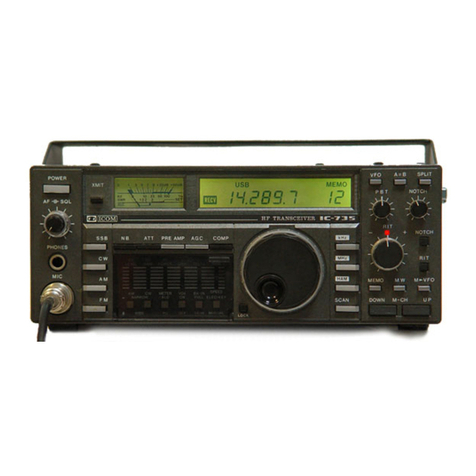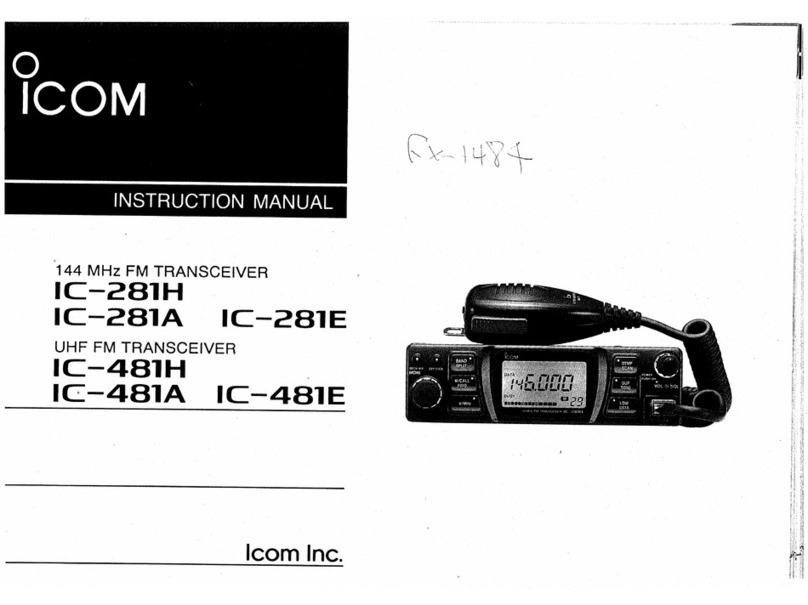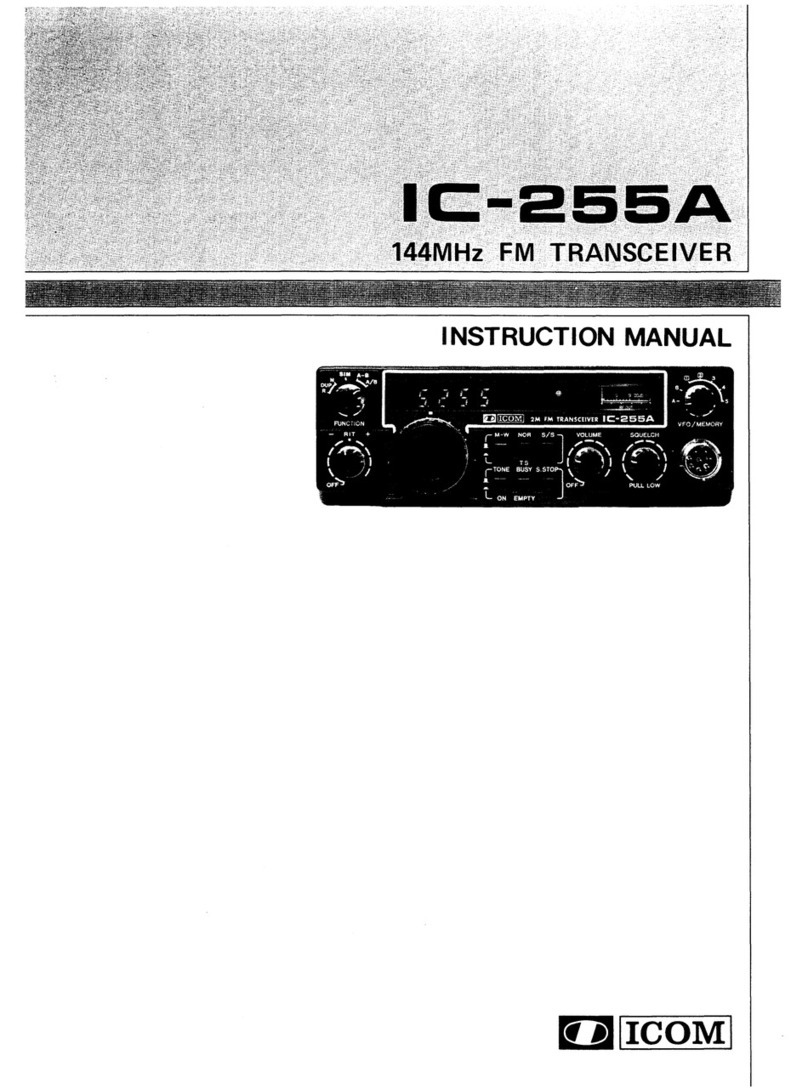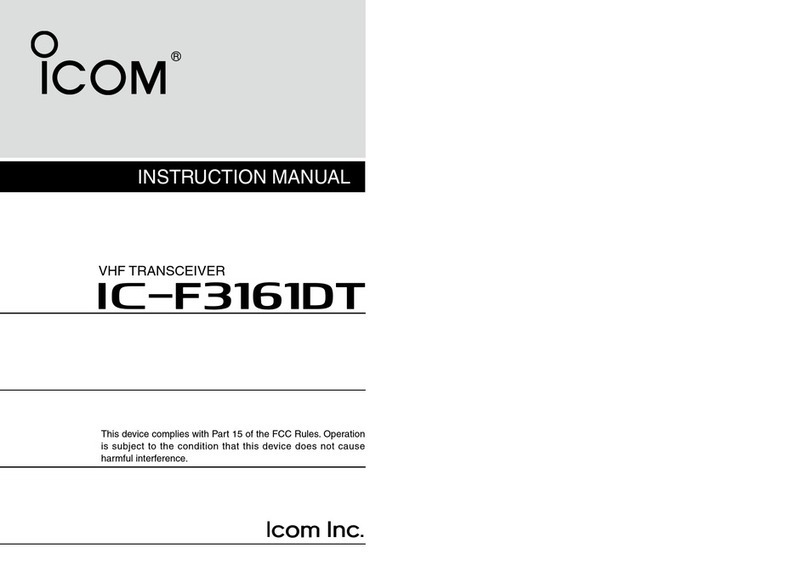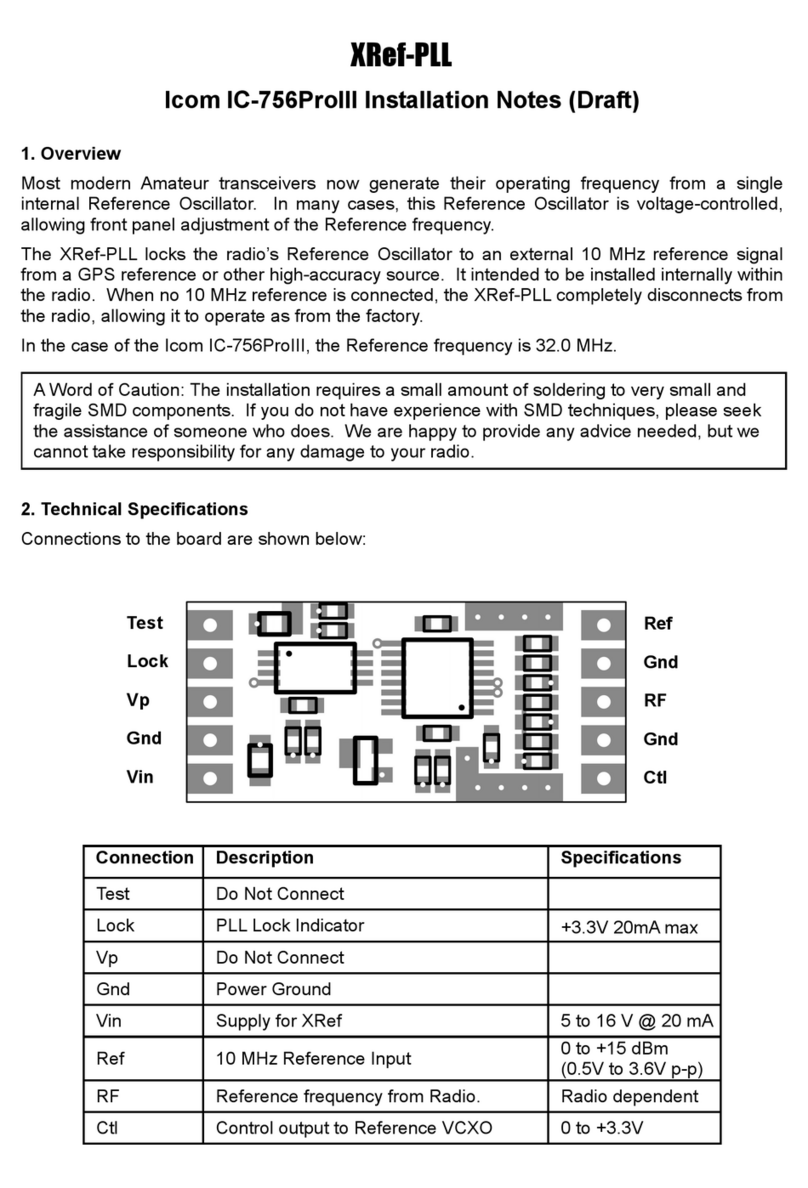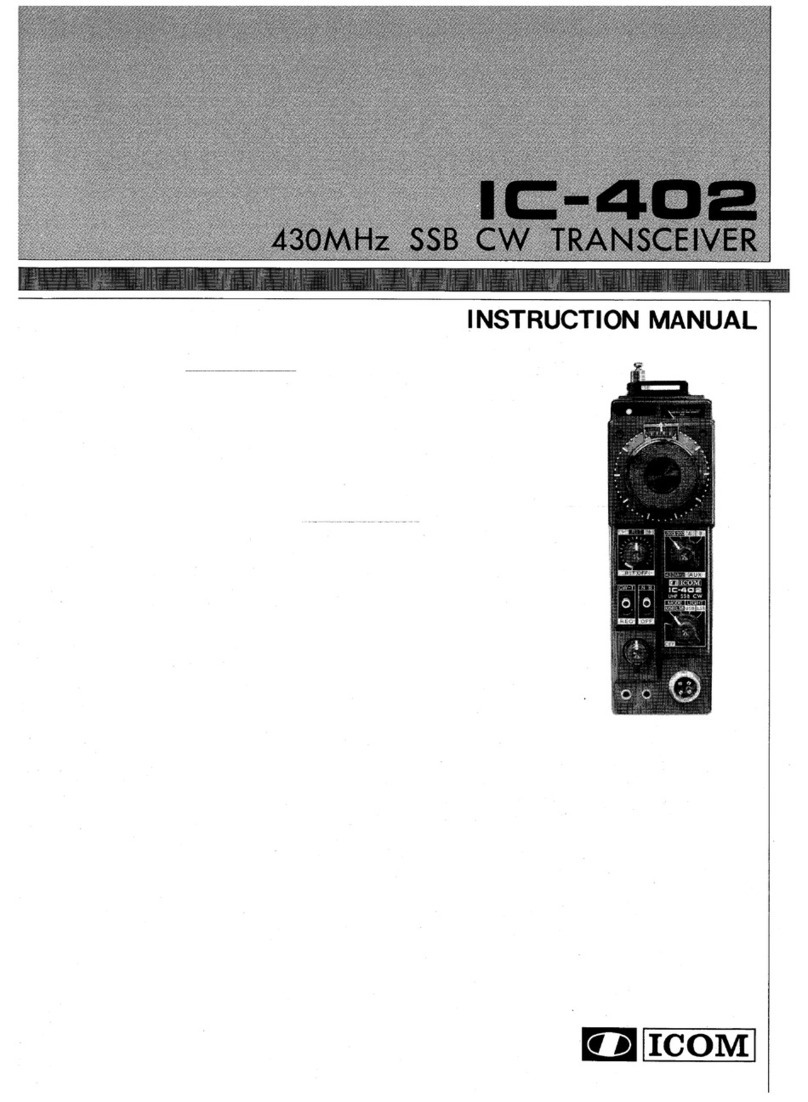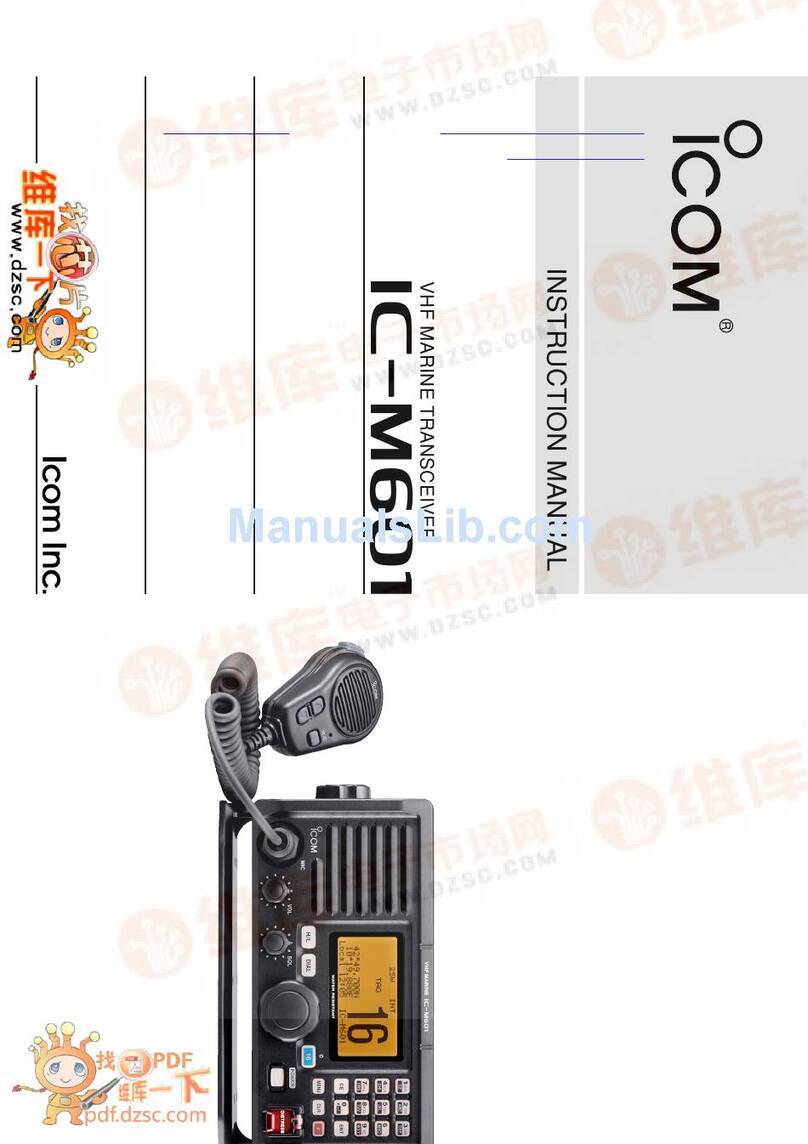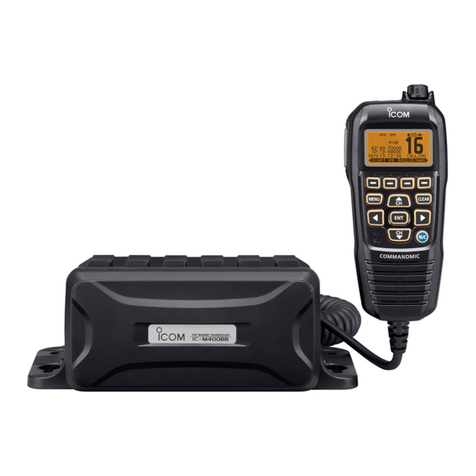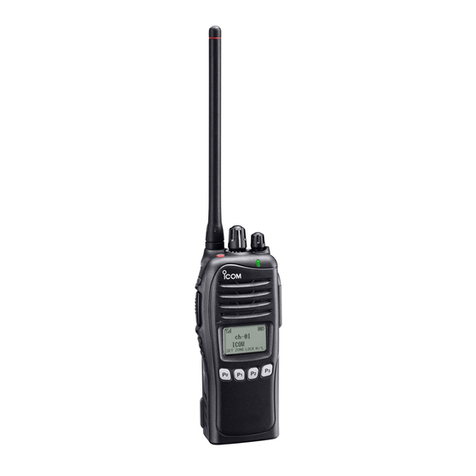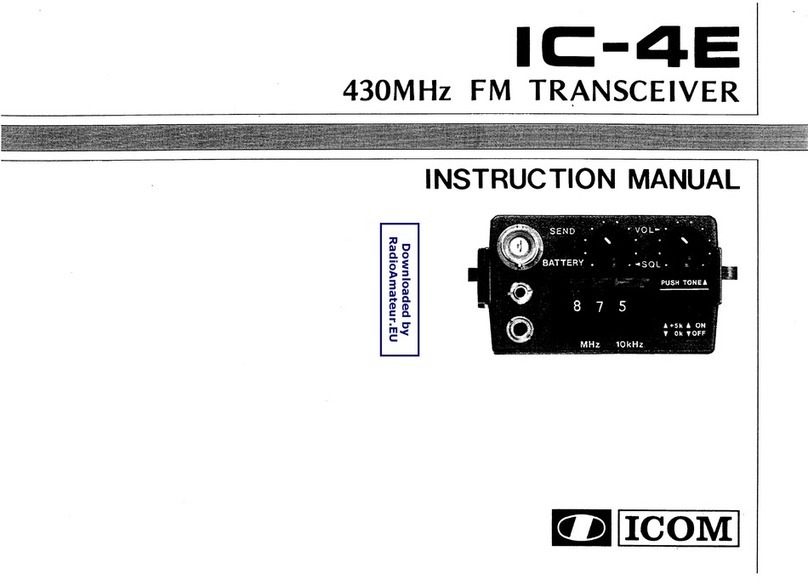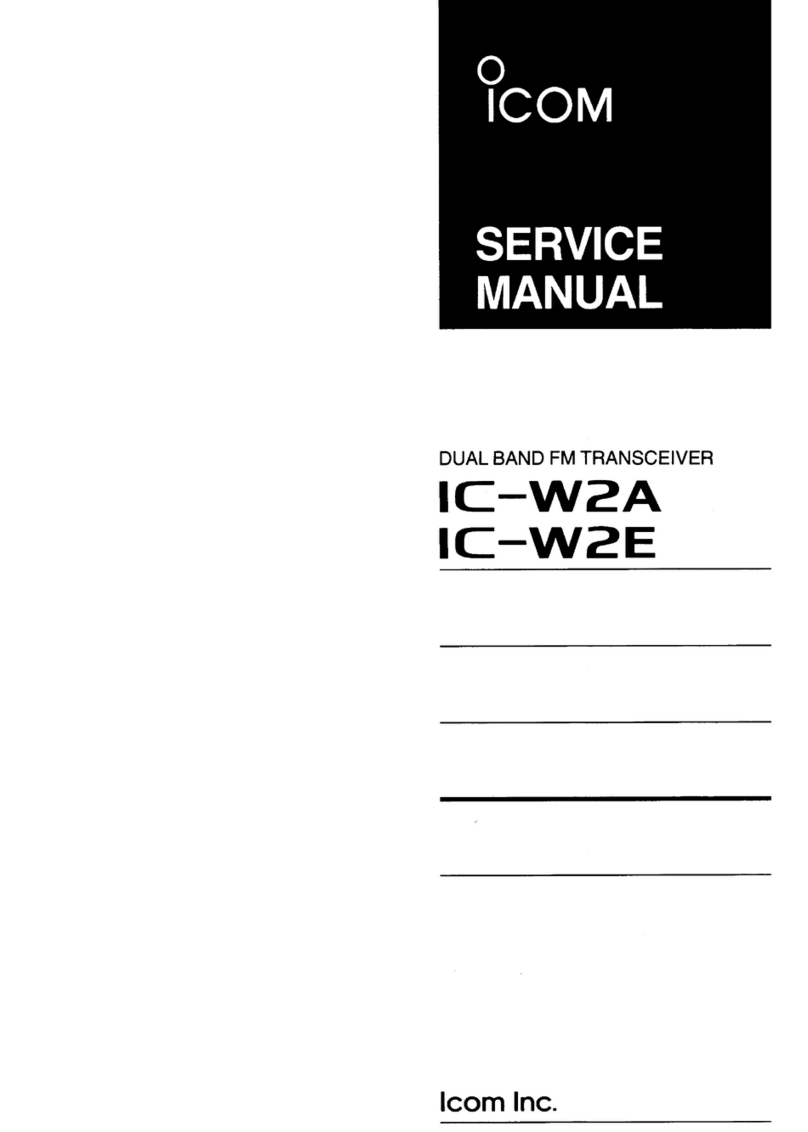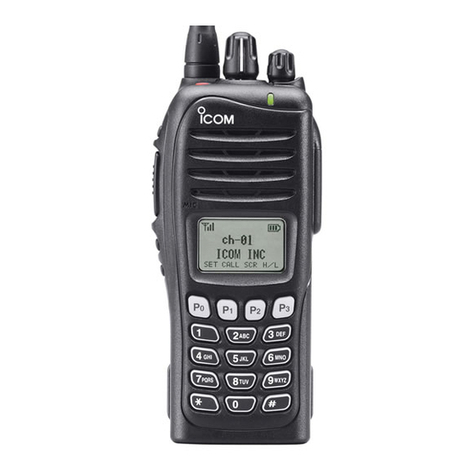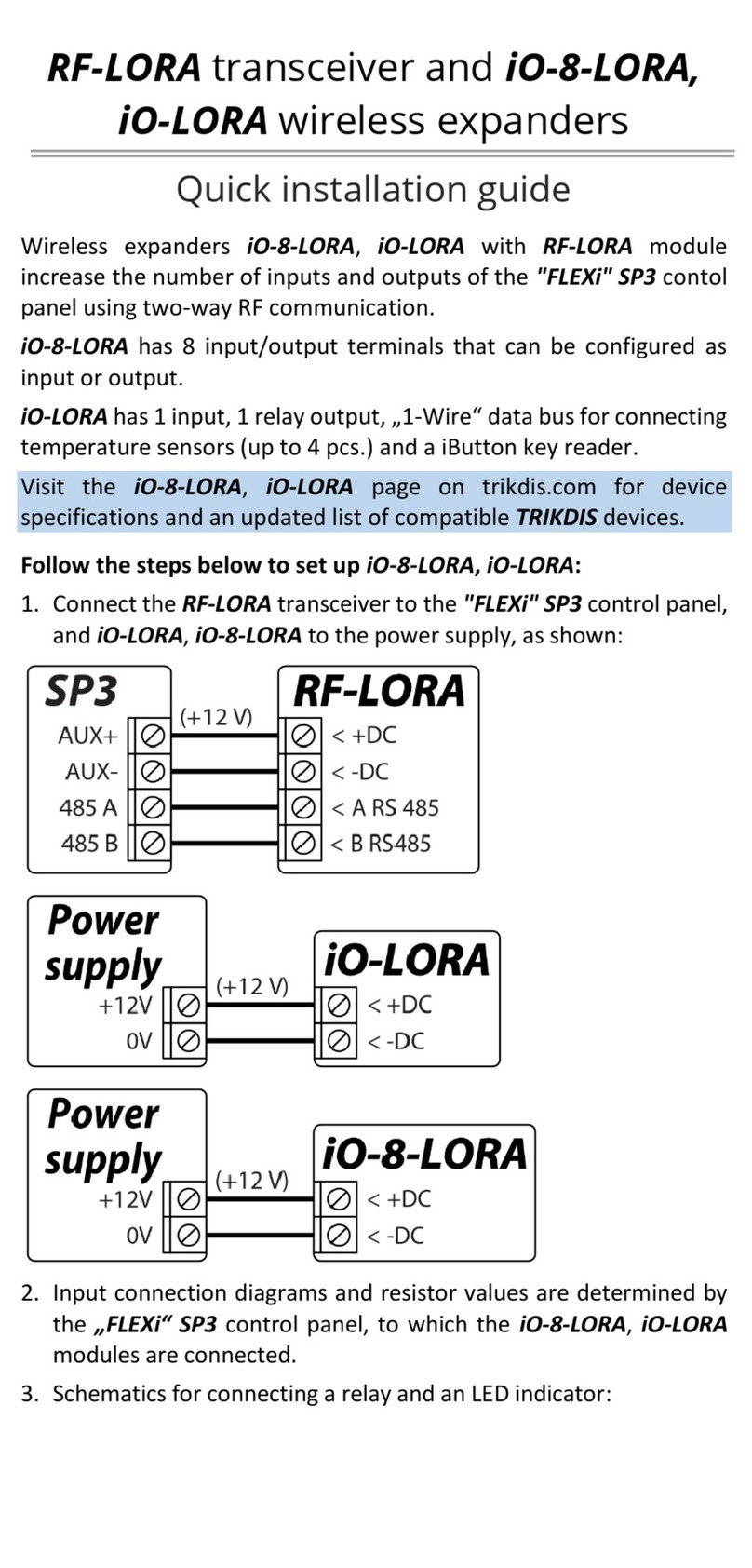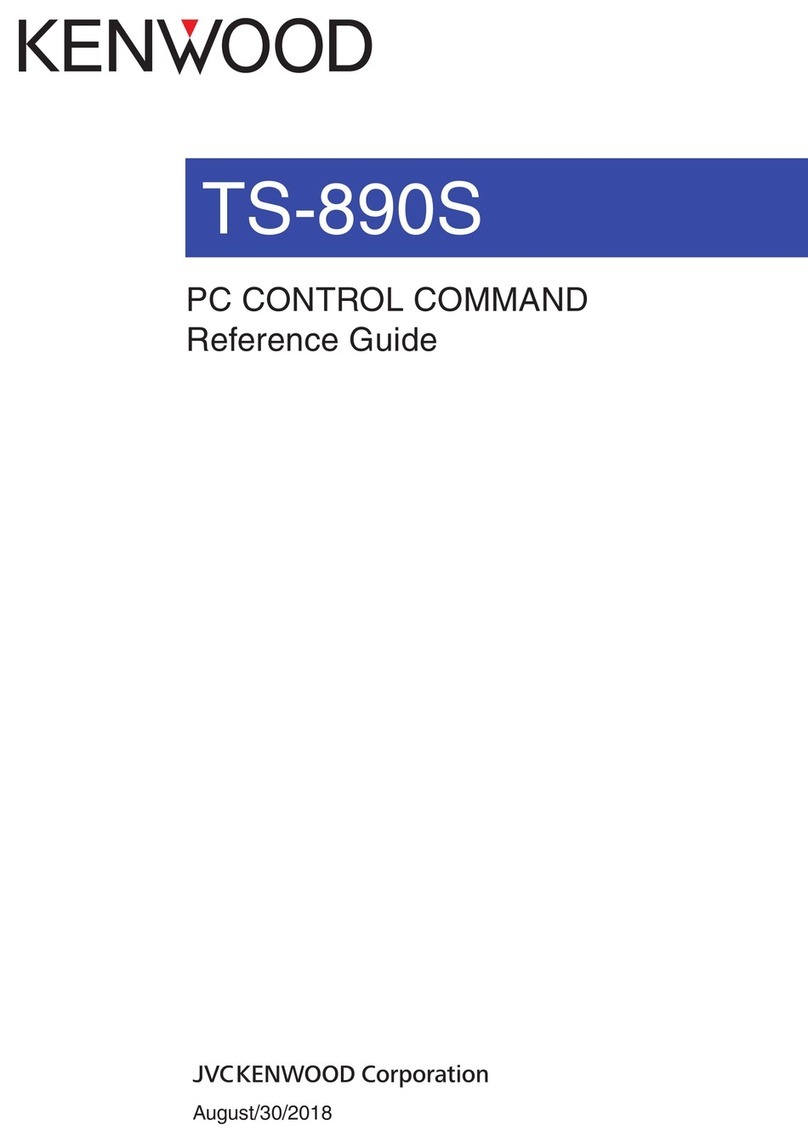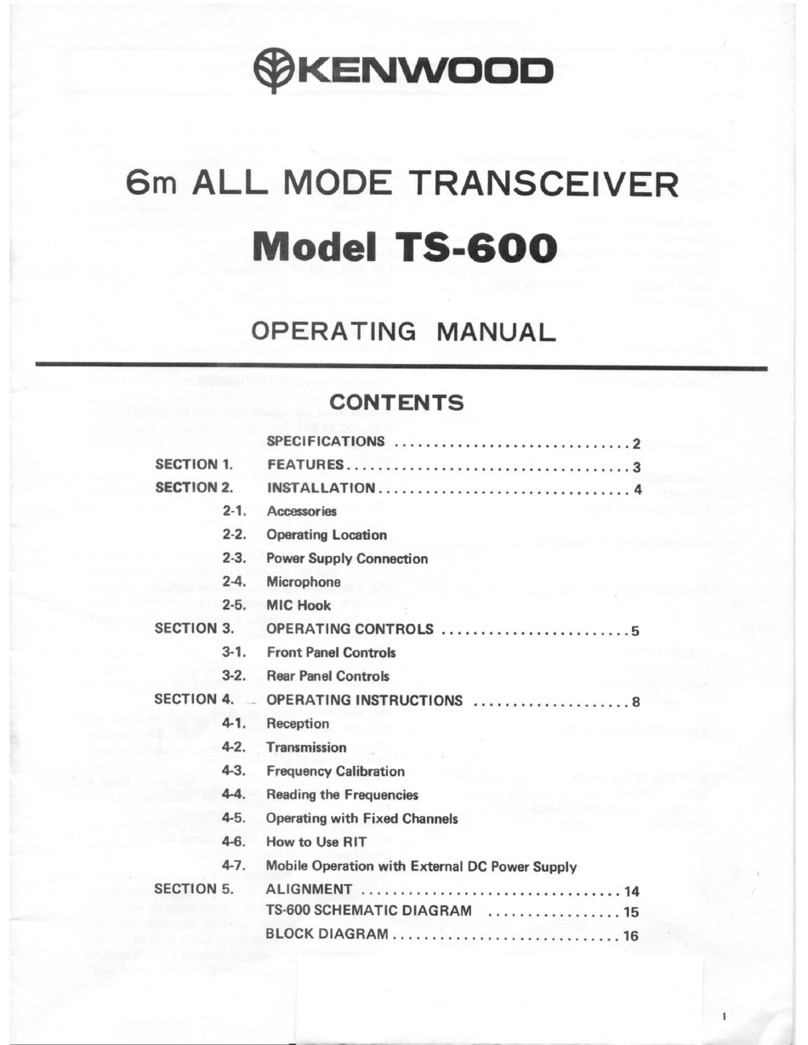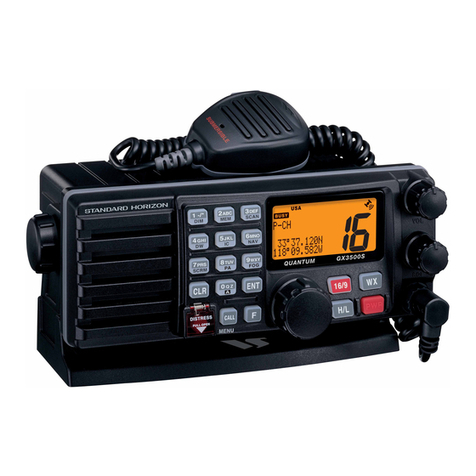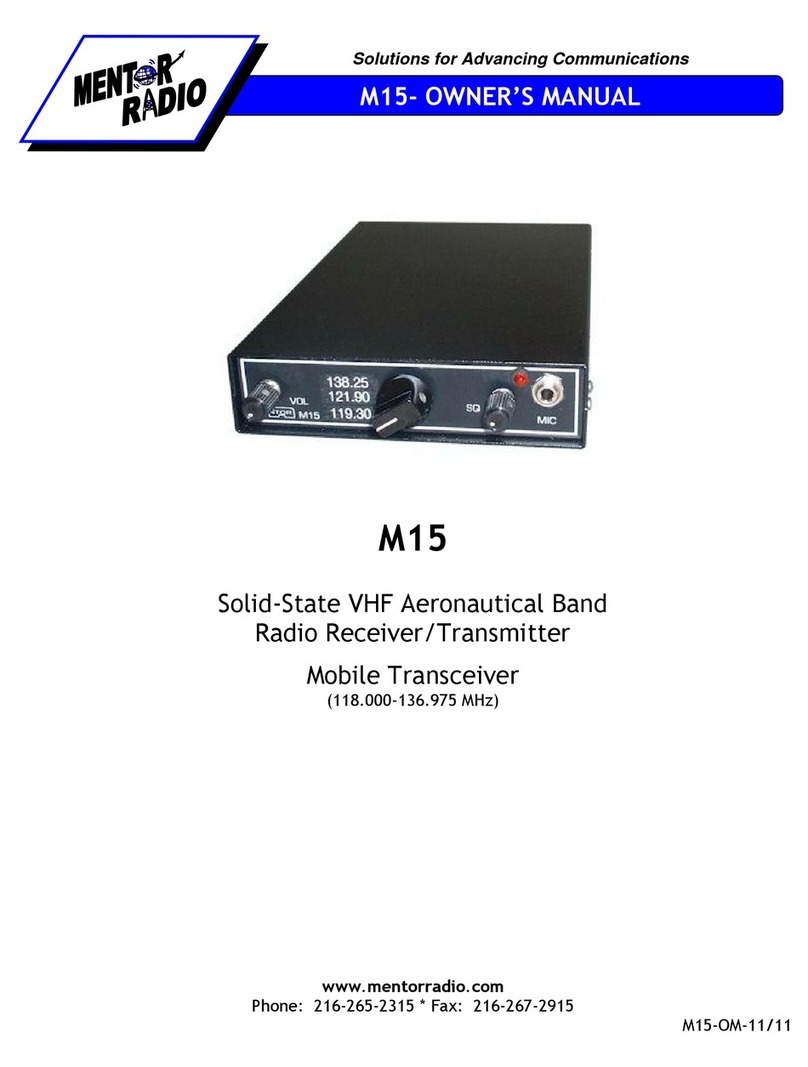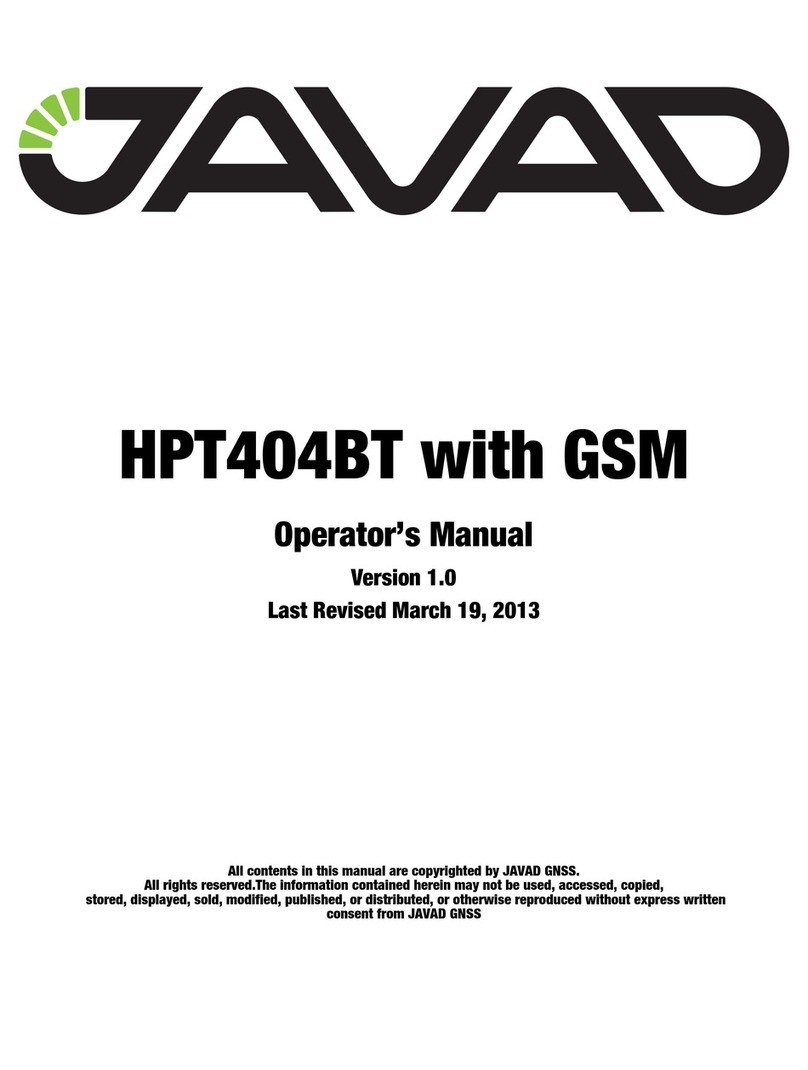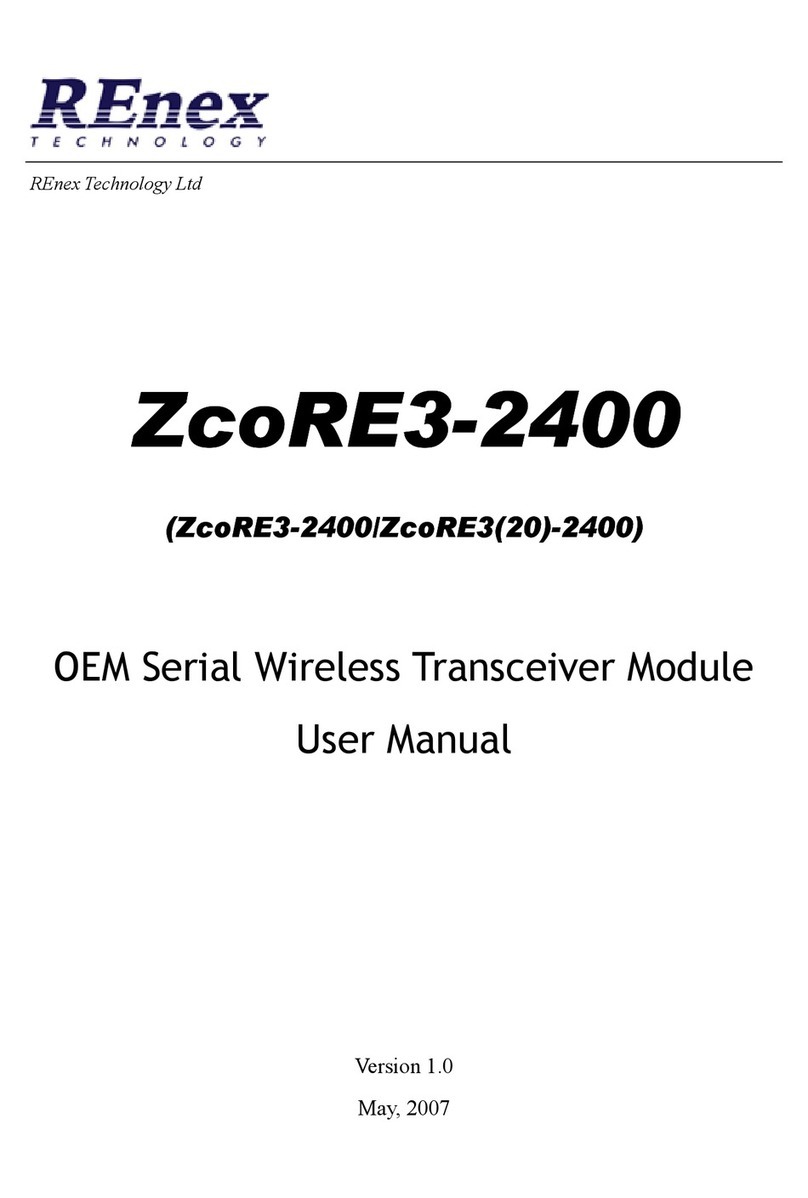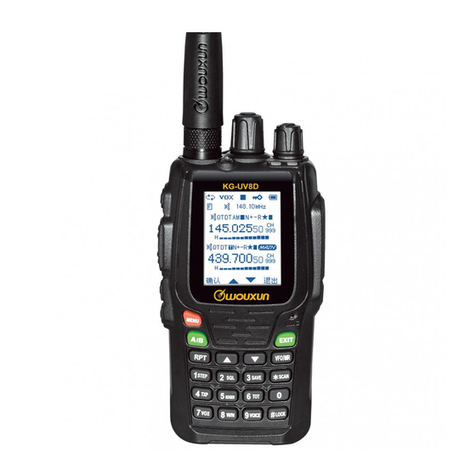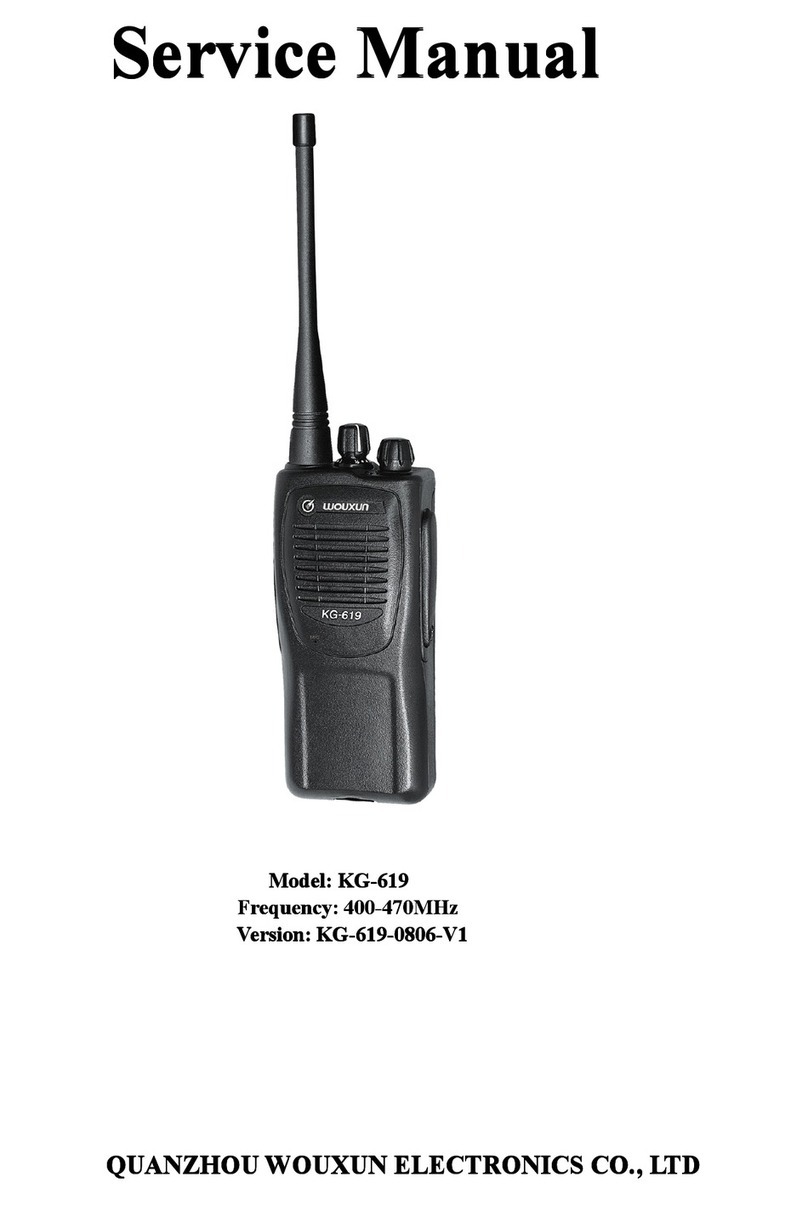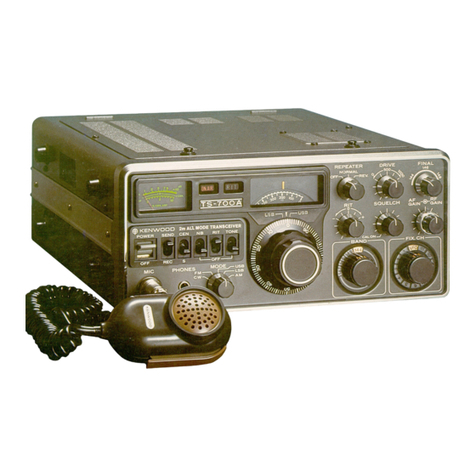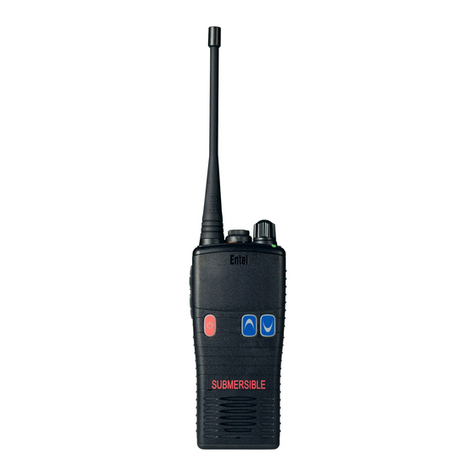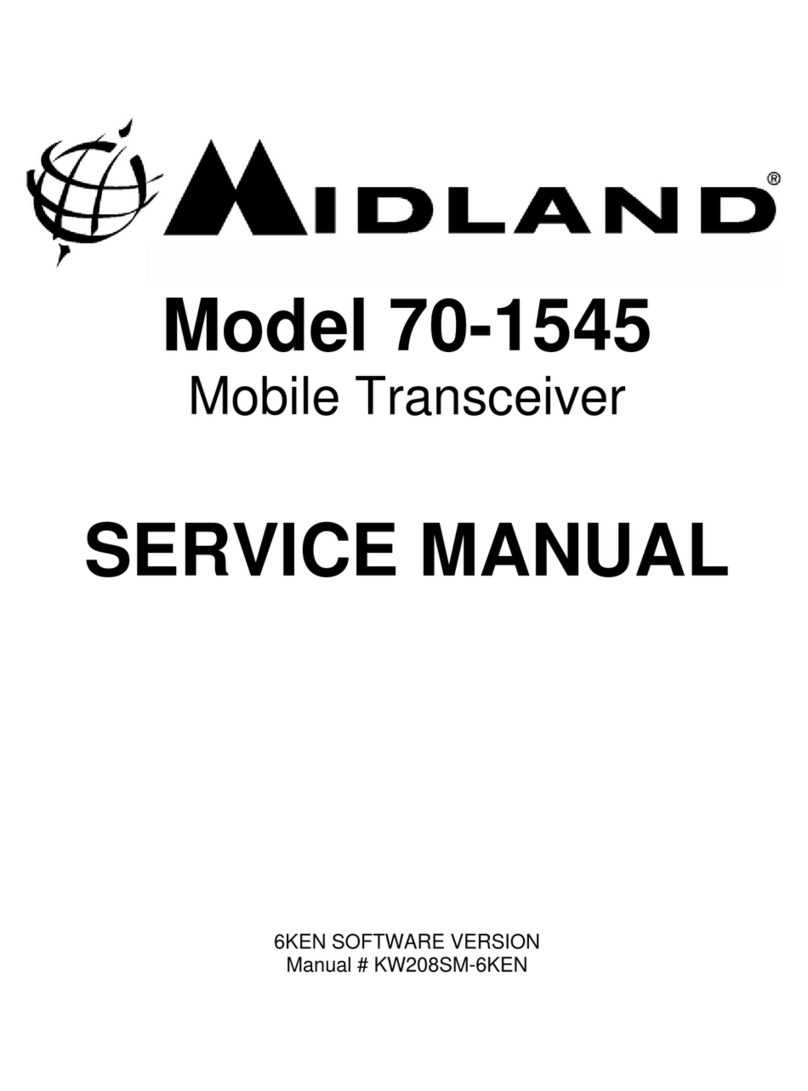Icom IC-706 User manual

HF/VHF TRANSCEIVER
IC-706
Icam
Inc.

INTRODUCTION
This
set'\lioo manual
<lesctibes
the latest...-vice;"formationtor
th"
1e-706
HFNHF
TRANSCEIVERat the time
01
publication
VERSION
NO.
VERSION
SYMaoL
m
,.-
'"'
mF,anot
'M
~
0
__
"'"
~
U.S.A.
=
To
upgradequality, an1 el<lclr",,1
or
mechanical pans
and
inte,nat circuits
a,e
subjecllO
change without nOllee
or
obiigation.
DANGER
NEVER
connect
lhe
l'anse";.,,'
10
an
AC outlet
or
to
aDC
power
supp1'j
thai
uses
mOre
than
16
V,
This will
,uin
the
Iran""""",.
00
NOT expose
lhe
tran"""",,,,
to
rain,
SOO'W
or any liquid.
DO
NOT
,e.erse
the
poI.'ilies
01
lhe
powe,
suPply
when
coo"""ting the tronKci<er.
00
NOT
apply
(In
RF
s>gnat
01
more
than
20
dBm
(\00
mWI
to
lhe
antenna connector. This could
d"m"9"
the
transe";.",'s
lrentend,
ORDERING PARTS
Be su,e
10
include
Ihe
following four poinls
when
ordering
replacement
pM.:
1.
Hkligit
order numbe<s
2. Component
pM
number
and
name
3. EQUipment
mOOel
""me
and unit
name
4. Quantity'eQUired
<SAMPLE
ORDER:>
1!lC()l)4(l6O
s.le
,.p(;2709T-E3
1e-706
MAINu",r
5"""""
88'COOO96lJ
Screw
OHM2.~,H"
1C-706
r"""""",,
'0""""'
Add,esses
are
p,o.ide<! on
the
inside back
<XWer
(or you,
-
REPAIR NOTES
1.
"'lak"
su,e aproblem is intemal before disassembling the
Ira""""""',
2. DO
NOT
open
the
t'anseei.",
unlil
th"
tranace'.er
i.
disconnected from its powe' source.
3.
00
NOT(orce any
0I11Ie
.ariable
components.
Tum
them
slowly
and smoolhly.
4.
DO
NOhhort
anycircuitoor electronic
pMs.
An
insulated
tun
....
1001
MUST
be
used (or
al
adlvstments.
5DO
NOT
keep
power
ON
for
a
long
time
when
the
t,anscei.",
is
defecti"".
6
DO
NOTt'ansmit power
;"to
a
'ignal
generator
or
a
sweep
_ator.
7,
ALWAYS
connect a
50
dB
to
00
dB atlenuator between
the transcei",,'
and
•
<leviation
meteror spectrum
analy''''
when usingsuch lesl equipment.
8. READ the
inst"",tion.
01
lestequipment tr.,roogh1'j belorll
con
r>ec1it'1g
equ;pmenttothe tran""";"',,,.

TABLE
OF
CONTENTS
SECTION 1SPECIFICATIONS
SECTION 2INSIDE VIEWS
SECTION 3CIRCUIT DESCRIPTION
3 - 1 RECEIVER CIRCUITS 3 - 1
3 - 2 TRANSMITTER CIRCUITS 3 - 4
3-3
PLLCIRCUITS
3-6
3 - 4 LOGIC CiRCUiTS 3 - 8
SECTION 4ADJUSTMENT PROCEDURES
4 - 1 PREPARATION BEFORE SERVICING 4 - 1
4 - 2 PLL ADJUSTMENT
;~
4 - 2
4- 3 RECEIVER ADJUSTMENT 4 - 2
4- 4 TRANSMITTER ADJUSTMENT , 4 - 4
4- 5 METER ADJUSTMENT 4 - 9
SECTION 5
PARTS
LIST
5 - 1 IC-706 5 - 1
5-2
AT-180
5-19
SECTION 6MECHANICAL PARTS
AND
DISASSEMBLY
SECTION 7SEMI-CONDUCTOR INFORMATION
SECTION 8
BOARD
LAYOUTS
8 - 1 DISPLAY UNIT 8 - 1
8-2
MAIN UNIT
8-3
8 - 3
PLL
UNIT 8 - 5
8 - 4
PA
UNIT 8 - 6
8 - 5 FILTER UNIT 8 - 7
SECTION 9OPTIONAL UNITS
9
-1
UT-102 VOICE SYNTHESIZER UNIT
9-1
9 - 2 AT-180 HF/50 MHz AUTOMATIC ANTENNA TUNER 9 - 1
SECTION
10
BLOCK
DIAGRAM
SECTION
11
VOLTAGE
DIAGRAM

SECTION 1SPECIFICATIONS
AM
(for
10
dB
SIN)
AM
FM
Intermediate fr
:lCluencies:
MODE 1st 2nd 3rd
SSB 69.0115 MHz 9.0115 MHz -
AM 69.0100 MHz 9.0100 MHz -
CW
69.0106 MHz 9.0106 MHz -
FM 69.0115 MHz 9.0115 MHz 455 kHz
RTIY
69.0105 MHz 9.0105 MHz -
WFM 70.7000 MHz 10.0115 MHz -
...
•
RECEIVER
•Receive system
SSB, CW, AM,
RTIY,
Double-conversion superheterodyne
WFM
FM Triple-conversion superheterodyne
•SensitIVIty (preamp ON):
SSB,
CW
1.8-29.9950 MHz·
(for
10
dB
SIN)
Less than 0.16
JlV
50-54
MHz
Less than 0.16
JlV
144-148 MHz
Less than 0.16
JlV
0.5-1.8
MHz
Less than 31.6
JlV
1.8-29.9950 MHz·
Less than 2.0
JlV
50-54
MHz
Less than 2.0
JlV
144-148
MHz
Less than 2.0
JlV
FM 28.0-29.7 MHz
(for
12
dB
SINAD)
Less than 0.5
JlV
50-54
MHz
Less than 0.3
JlV
144-148 MHz
Less than 0.3
JlV
WFM
76-108
MHz
(for
12
dB
SINAD)
Less than 10.0
JlV
·Some
frequency
ranges
outside
of
the
ham
bands
are
not
guaranteed.
•Squelch sensitivity
(preamp
ON)
:
SSB Less than 5.6
JlV
at threshold
FM Less than 0.5
JlV
at threshold
•Selectivity
(normal
filter
selection)
:
SSB, CW,
RTIY
More than 2.3
kHz/-6
dB
Less than 4.0
kHz/-60
dB
More than 6.0
kHz/-6
dB
Less than 20.0
kHz/-40
dB
More than 12.0
kHz/-6
dB
Less than 30.0
kHz/-50
dB
FM narrow More than 8.0
kHz/-6
dB
•Spurious and image :More than 70 dB
(HF
bands
only)
rejection ratio
•Audio output power :More than 2.0 W
(at
10%
distortionwith
an
8n
load)
•RIT variable range :±1.0 kHz max.
5-100W
2-40W
1-10W
1-4
W
SSB, CW, FM,
RTIY
AM
SSB, CW, FM,
RTIY
AM
:Less than ±0.0007% from 1min. to
60 min. after power ON. After that,
rate of stability change is less than
±0.0001%/hr. at +25°C (+77°F).
Temperature fluctuations
(O°C
to
+50°C; +32°F to +122°F) less than
±0.0005%.
:13.8 VDC ±15% (20 A)
:Transmit 20 A
Receiver squelched 1.7 A
max. audio 1.9 A
:167(W) x200(D) x58(H) mm
69
/16(W)
x77/8(D) x29
/32(H)
in
(projections
not
included)
:2.5
kg
(5.5
Ib)
144 MHz
•Mode
GENERAL
•Frequency coverage: Receive
30
kHz-200
MHz
Range
restricted
in
some
versions
Specifications
guaranteed:
500
kHz-4.00
MHz
4.50
MHz-8.00
MHz
9.0
MHz-29.955
MHz
50
MHz-54
MHz
144
MHz-148
MHz
Transmit
1.800-1.99999
MHz·'
3.500-3.9999 MHz·2
7.000-7.300 MHz·3
10.100-10.150 MHz
14.000-14.350 MHz
18.068-18.168 MHz
21.000-21.450 MHz
24.890-24.990 MHz
28.000-29.700 MHz
50.000-50.400 MHz·4
144.000-148.000 MHz·5
.,
1.810-1.850
MHz
France
version
.23.500-3.800
MHz
France
version
.37.000-7.100
MHz
France
version
.45.000-5.200
MHz
Denmark
version
.5144.000-146.000
MHz
all
European
versions
:SSB, CW, AM, FM, WFM,
RTIY
(WFM
is
for
receiver
only)
•Number of memory :102
(split
memory:
99;
scan
edge:
2;
channels
call
channel:
1)
•Antenna impedance :50 n
nominal
•Usable temperature :
-10°C
to +60°C (+14
of
to +140°F)
range
•Frequency stability
•Power supply
requirement
•Current drain
(at
13.8
V
DC)
•Dimensions
•Weight
TRANSMITTER
•Output power
HF, 50 MHz
•Spurious emissions
HF Less than
-50
dB
5(1
MHz Less than
-60
dB
144 MHz Less than
-60
dB
•Carrier suppression :Morethan 40 dB
•Unwanted sideband :Morethan 50 dB
•Microphone :600 n
impedance
1 - 1

SECTION 2INSIDE VIEWS
_MAIN UNIT
Utmhe<=co,---------
(1G3:
N04BTC1T]
1<1
If
foll"';;::
_
Ifl,'fL·120)
AM2r><lIF
_,~:::::=====
Ifl5,
flo'
'61
SSB;CW
2nd
IF
1oIt
..
IFI4,
;1.-301
2nd
If
Me<
_
(;13; FV,41
-~,"'------~
opO"",",
fIl,
...
(
fl"OO.
fl·\OI
)
Fl-l03.fl-n3
•
PA
AND
Pll
UNITS
f.".
~ter,
lor HF/50
MH,
_
(Ole.
Q19: MRF255)
PA
'""
~
Rcfe<enco
loop
veo
<>-Coil
----
R.I",,,,,,,", loop
DOS
IC
_
(1C10;SC-12'~)
&V
'O(7-J"''''
eitro,-------
AF
P"""'
a..,..l
..
-------
IIC50
LM'251
AF_oontroller------
IIC<: M>;!8<Fp)
BFODDSIC--------~
IlC\2: SC-'2871
R.'~
0..,;
..
""::::::,-
_
(X1; CA-215 3Q.(I(I(l
MH,)
filTERurul
---01"
.",.,.
.....
11<:35:
M62354Gp)
--,~-
1X2:CA.520 19.(i008MH,)
C"U
11='''''''''''''''-
""'..,...
FM
:!rd'F
""
..
IFL6:
SFf'C<l~)
Af
_to'
."'''''
,!C15:
BU405l'6CF)
----RX
prea""'liO<
''''
,
••
MH,
(IC"
"PG,658Gj
---_a~
102;
MRF50151
----,D<;.;e~
...
{Q"
MRFf>55)
____
,Pr""'
....
"""",",
(016:
MRF,581)
____
'Mllin
loop
veo
"""-"t
----'r'l.lo.o>'t
----M.'"
IO<IP
I'lL
----'''"
11C'3:
PlL2001SI
____
'OptioMl GA·502
______
2nd
Lo
and
,
..
",once
osciIato<
6~

SECTION 3CIRCUIT DESCRIPTION
3-1
RECEIVER CIRCUITS
3·1·1 HF/50 MHz
RF
CIRCUIT (FILTER AND
MAIN UNITS, HPF BOARD)
HF/50
MHz
RF
filters pass only the desired band signals
and
suppress any undesired
band
signals. The HF/50
MHz
RF
circuit has 7low-pass filters and 6high-pass filters for
specified
band
use.
HF/50
MHz
RF
signals from the [ANT1] connector, pass
through one of 7low-pass filters
as
below, the transmit!
receive switching relay (RL1)
and
low-pass filter (L
1,
L2,
C1-C5),
and
are then applied to the
MAIN
unit via
P1
(MAIN
unit J1).
Used RF low-pass
filter
(FILTER unit)
Band Control Input
Band
Control Input
signal relay signal relay
0.03-2
MHz
L1
RL15
15-22
MHz
L5
RL11
2-4
MHz
L2
RL13
22-30
MHz
L6
RL7
4-8
MHz
L3
RL5
30-60 MHz
L7
AL3
8-15 MHz
L4
RL9
The signals from the FILTER unit are applied
to
or bypass
the 20
dB
attenuator
(A3,
R4,
01,
01). The signals pass
through the high-pass filter (L3-L7, C3-C7, R5-R7) to
suppress strong signals below 1.6
MHz
and
are then
applied to the HPF board via the "TOAT" terminal.
(1) 0.03-2
MHz
and 30-40
MHz
The signals pass through alow-pass filter (L23,
L24,
C38-
C42), bypass the high-pass filters via
05
and
are then
applied to the preamplifier circuit.
(2)
2-30
MHz
The signals pass through the low-pass filter
(L23,
L24,
C38-C42). The filtered signals are applied to one of 5
high-pass filters
as
at right above
and
are then applied to
the preamplifier circuit.
•RECEIVER CONSTRUCTION
(3) 40-60 MHz
The signals pass through the high-pass filter (L29-L31,
C47-G51) via 012
and
are then applied to the preamplifier
circuit.
Used RF high-pass filter (HPF board)
Band Control Input
Band
Control Input
signal diode signal diode
0.03-2
MHz
TH
05
15-22
MHz
H5
021
2-4
MHz
H2
016
22-30 MHz
H6
07
4-8
MHz
H3
020
30-40 MHz
TH
05
8-15
MHz H4 017
40-60
MHz
BV,
T8 012
3·1·2 VHF
RF
CIRCUIT (PA UNIT)
VHF AF bandpass filters pass only the desired band signals
and suppress any undesired band signals. The VHF AF
circuit has 2bandpass filters.
VHF AF signals from the [ANT2] connector, pass through a
low-pass filter, antenna switching circuit (04, 014, 015) and
one of 2bandpass filters. The signals within 144-148
MHz
pass through one bandpass filter (L29,
L30,
C45-C49)
and
the signals within 60-144
MHz
or 148-200
MHz
pass
through another bandpass filter (L25,
L26,
L40, L49,
C52-
C57, C151-C154).
The filtered signals pass through the AF attenuator (A27,
024), are amplified at the
AF
amplifier (IC1), applied to the
MAIN
unit via
P2
(MAIN
unit J3)
and
are then applied
to
the
preamplifier circuit
in
the
HPF
board.
3·1·3 PREAMPLIFIER CIRCUIT (HPF BOARD)
The preamplifier circuit
in
the IC-70a has approx. 15
dB
gain
over awideband frequency range.
_
.......••
------~
..
_.
__
._--~_
..----_..-
_-
I
IANT2
JPA
unit
60-200
MHz
a----
AMP>-----...J
FILTER
unit
:
MAIN
unit
2nd LO;
aO.OMHz
ToWFM
detector (IC9)
BFO;
9.0115 MHz
~
TOAF
selector
switch
Product (IC1S)
detector
lela
To FM detector
(IC1S)
To AM detector
(044)
3
-1

3-1-5 1
st
IF CIRCUIT (MAIN UNIT)
Mode Frequency
SSB,
FM
69.0115 MHz
CW,
RTTY 69.0106 MHz
AM
69.0100 MHz
WFM 70.7000 MHz
The 1st IF signals from IC4 are converted to 9MHz or 10.7
MHz 2nd IF signals at the 2nd mixer (IC5).
The
2nd
mixer circuit mixes the amplified 1st IF signals and
2nd
LO
signal (60.00 MHz)
to
convert the 1
st
IF
to
a
2nd
IF.
Mode Frequency
SSB,
FM
9.0115 MHz
CW,RTIV
9.0106 MHz
AM
9.0100 MHz
WFM 10.7000 MHz
When the preamplifier is turned ON, the signals from the RF
circuit are applied to the preamplifier
(ICl)
via 025. Ampli-
fied or bypassed signals enter the
MAIN
unit via the "AMPI"
terminal and are applied to the 1st mixer circuit (IC3).
3-1-4
1st
MIXER CIRCUIT (MAIN UNIT)
The 1
st
mixer circuit mixes the receive signals with the 1
st
LO
signal to convert the receive signal frequencies to a69
or 70.7 MHz 1st IF.
The signals from the preamplifier circuit, or signals which
bypass the preamplifier, are applied to alow-pass filter and
then to the 1st mixer (IC3).
The 1st
LO
signal 1
st
IFfrequency
(69.0415-269.0115 MHz)
enters the MAIN unit from
the PLL unit via J4. The
LO
signal is amplified at
04,
filtered
by
alow-pass
filter, and then, applied to
the 1st mixer.
The 1st IF circuit filters and amplifies the 1st IF signals. The
1st IF signals are applied to an MCF (Monolithic Crystal
Filter;
Fll
a,
Fll
b)
to suppress out-of-band signals.
While
in
non-WFM modes, the 69 MHz 1st IF signals pass
through the pair of MCF's
(Fll)
and are applied to the IF
amplifier (IC4). While
in
WFM mode, the 70.7 MHz 1st IF
signal pass through abandpass filter (L1
04-L
108,
C358-
C361) and are applied to the IF amplifier (IC4).
The AGC voltage is supplied to the transmit/receive switch-
ing circuit (013, 014) and 013/014 function as
PIN
attenu-
ators for AGC operation.
The amplified signals are then applied to the 2nd mixer
(IC5).
3-1-6 2nd MIXER CIRCUIT (MAIN UNIT)
The 2nd IF signals are 2nd IFfrequency
applied to Fl3 to suppress
undesired signals such as
the 2nd
LO
signal, and are
then applied to the noise
blanker gate (020, 021).
3-2
While in
FM
(normal) mode, the IFsignals pass through the
low-pass filter (L52, C82-C84) bypassing
Fll
and the noise
blanker gate and are then applied to the 2nd IF circuit.
While
in
WFM mode, the IF signals pass through the low-
pass filter (L52, C82-C84), IF amplifier (05), ceramic
filter:
(FI2) and IF amplifier (052). The signals are then applied
to the
FM
IF
IC
(IC9) for demodulation into AF signals.
3-1-7 NOISE BLANKER CIRCUIT (MAIN UNIT)
The noise blanker circuit detects pulse type noise, and turns
OFF the signal line when noise appears.
The 2nd IF signals from FI3 are applied to the noise blanker
gate (020, 021). Aportion of the signals from FI3 are
amplified at the noise amplifiers (010,
012,
amplifier sec-
tion of IC9), then detected at the noise detector (039) to
convert the noise components to
OC
voltages.
The signals are then applied to the noise blanker switch
(013, 014). At the moment the detected voltage exceeds
the
013's
threshold level,
014
outputs ablanking signal to
close the noise blanker gate (020, 021) by applying
reverse-biased voltage.
The detected voltage from
039
is also applied to the noise
blanker AGC circuit (011,
016)
and is then fed back to the
amplifier (IC9) as abias voltage. The noise AGC circuit
prevents closure
of
the noise blanker gate for long periods
by
non-pulse-type noise. The time constant of the noise
blanker AGC circuit is determined by R143
and
C459.
The signals from the noise blanker gate are then applied to
the 2nd IF circuit.
3-1-8 2nd IF CIRCUIT (MAIN UNIT)
The 2nd IFcircuit amplifies and filters the 2nd IF signals.
Both the signals passed through and bypassing the noise
blanker gate (020, 021) are amplified at IC6 via
022
and
applied to a2nd IF filter as shown
in
the following table.
2nd IFfilters
Mode Used filter Control signal
SSB med.,
CW
med., FL-30 (FI4) 2F23
RTTY med.,
AM
nar.
AM
FL-116 (Fl5) 2F60
FM,
FM
nar. Bypassed 2NTH
SSB nar. Optional FL-223 2FOP
CW
nar., RTTY nar. Optional FL-l00, 2FOP
FL-l
01,
FL-223
SSB
Wide,
CW wide, Optional
FL-l03
2FOP
RTTYwide
The AGC voltage is supplied to the transmit/receive switch-
ing
circuit (022, 023) and 022/023 function
as
PIN
attenu-
ators for AGC operation.

The filtered or bypassed signals are applied to the buffer
amplifier (065), IF amplifiers (042,
043)
and buffer ampli-
fier (044) to obtain adetectable level. The
AGC
voltage is
supplied to the 2nd gate of
042
for
AGC
operation.
When AGC slow is selected,
C141
and R152 are connected
in
parallel to obtain appropriate AGC characteristics.
3-1-11 S-METER CIRCUIT (MAIN UNIT)
Output signals from
044
are shared between the SSB/CW/
RTTY detector (IC16),
AM
detector (044) and AGC detector
(043). Output signals from
065
are applied to the
FM
IF
IC
(IC18).
The S-meter circuit indicates the relative received signal
strength while receiving by utilizing the
AGC
voltage which
changes depending
on
the received signal strength.
3-1-9 IF SHIFT CIRCUIT (MAIN UNIT)
The IF shift circuit shifts the center frequency of IF signals
to electronically shift the center frequency.
The output voltage of the AGC amplifier (IC12a pin 1) is
applied to the main
CPU
(IC25 pin 30) as
an
S-meter signal
via the "SMV" signal line. The
FM
S-meter signal from the
FM
IF
IC
(IC18
pin
12)
is
also applied to the "SMV" signal
line via 068.
The IF shift circuit shifts the 1st
LO
and BFO within ±1.2
kHz
in
SSB/CW/RTTY modes or ±250
Hz
in
CW-N/
RTTY-N modes. As aresult, the 2nd IF (also 1st IF) is
shifted from the center frequency of the 2nd IF filter
(F14,
Fl5 or
an
optional IF filter). This means
2nd
IF signals
do
not pass through the center of the 2nd IF filter because the
passband width is fixed
in
the 2nd IF filter. Therefore, the
higher or lower frequency components of the IF are cut out.
Since the BFO frequency is also shifted the same value as
the 1
st
IF,
frequency
is
corrected at the detector.
In
the IC-706, the 1st
LO
frequency is shifted to change the
2nd IF because afixed 2nd
LO
frequency (60 MHz) is used.
The 1st IFfilter (FI1) and crystal filter
(F13)
have 15 kHz and
8kHz passband widths, respectively, and do not affect IF
shift operation.
The S-meter signal is applied to the sub CPU and is then
displayed
on
the S-meter readout.
3-1·12 SQUELCH CIRCUIT (MAIN UNIT)
The squelch circuit mutes audio output when the S-meter
signal is lower than the [RF/SOL] control setting level.
The S-meter signal
is
applied to the main
CPU
(IC25 pin
30)
and
is compared with the threshold level set
by
the
[RF/SOL] control. The [RF/SOL] setting is picked
up
at the
sub
CPU
(OISPLAY unit
IC1
pin 99). The
CPU
compares
the S-meter signal and [RF/SOL] setting to close or open
the squelch.
3-1-10 AGC CIRCUIT (MAIN UNIT)
The
AGC
(Automatic Gain Control) circuit reduces IF ampli-
fier gain to keep the audio output at aconstant level. The
receiver gain is determined by the voltage
on
the
AGC
line
(09
collector).
In
addition, the noise squelch signal from the
FM
IF IC
(IC18 pin 14) is applied to the main CPU (pin 31)
in
FM
mode. Aportion of the AF signals from the
FM
IF
IC
(IC18
pin
9)
are applied to the active filter section (pin 8) where
noise components above 20 kHz are amplified. The signals
are rectified at the noise detector section and then output
from pin 14. The resulting signal is applied to the main
CPU
via the "NSOV" signal line.
The 2nd IF signal from the buffer amplifier (044) is detected
at
the AGC detector (043) and applied to the
AGC
ampli-
fiers (021, IC12a,
09).
IC12a sets the receiver gain with
the [RF/SOL] control via the "RFGC" signal line.
When receiving strong signals, the detected voltage in-
creases and the
AGC
voltage decreases via the
OC
ampli-
fier (09). The
AGC
voltage
is
used for the bias voltage of
the transmiVreceive switching
PIN
diodes (013/14,
0221
023) to attenuate the received signals.
3·1-13 DEMODULATOR CIRCUITS
(MAIN UNIT)
(1) SSB/CW/RTTY modes
The 2nd IF signals from
044
are mixed with the BFO signal
from the PLL unit at the product detector (IC16 pin 6). The
detected AF signal from IC16 (pin
3)
is applied to the AF
selector switch (IC15 pin 12).
(2)
AMmode
The 2nd IF signals from
044
are detected at 044. The
detected AF signal is applied to the
AF
selector switch
(IC15
pin
14).
(3)
FM/FM
narrow modes
The 2nd IF signals from the buffer amplifier (065) are
applied to the
FM
IF
IC
(IC15 pin 16) where the IF signals
are converted into 455 kHz IF signals. The signals pass
through FI6 and are applied to the quadrature detector
section.
X1
is used for quadrature detector. The detected
AF signals from pin 9are then applied to the AF selector
switch (IC15 pin 15) via the de-emphasis circuit (IC12b).
SMV
S-meter
signal
8
+
:;;
o
:;l
a:
AGe Squelch
fast
signal
RFGC
voltage
021 ,...,.........
----+---1
8 V
---1
.......---<...----...-------,
AGCclrcult
2nd IF
043
signal
(112)
----.
.......
......-ft-oMHf::}
C148
043
(112)
+--+----'
3-3

(4)
WFM
mode
The
2nd
IF signals from the IF amplifier (05) pass through
F12,
are amplified at
052
and are then applied to the
FM
IF
IC
(IC9 pins
2,
3)
where the IF signals are converted into
AF signals. The detected AF signals from pin 8are then
applied to the AF selector switch (IC15 pin 11).
The amplified or compressed signals are applied to the VCA
section of IC22. The microphone gain setting from the
O/A
converter (IC35 pin 11) is applied to the VCA control ter-
minal (IC22 pin 10). The resulting signals from pin 9are
then applied to the buffer amplifier (063). External modu-
lation input from the [ACC] socket (pin 11) is also applied
to·
063.
3-1-14 AF SELECTOR SWITCH (MAIN UNIT)
The AF amplifier amplifies the AF input signal to asuitable
driving level for the speaker.
[VOX
GAIN]
(R239)
14
AFO
-signal
MIGC from
O/A
converter (IC35)
:
10
15
[ANTI
VOX]
(R244)
VXS8
VOX
OFF:
8 V
VOX
ON:
oV
While
in
FM/AM mode, the amplified signals from
063
are
applied to the limiter amplifier (IC24a) and splatter filter
(IC24b). The signals are then applied to the AF selector
switc'l(IC23)
in
AM
mode or to the varactor diode (067)
in
FM
mode.
While in SSB mode, the amplified signals from
063
are
applied to the AF selector switch (IC23) and then to the
balanced modulator (IC17).
MIC 22
signal
VOXO ...
17
t+--<
to CPU
Microphoneamplifier
[COMP GAIN] COMS
(R248) from CPU
__No/'_
•
IC22 :2. 3i
11
AFI
to PLL
unit
CW
side
tonel
beep tone
Optional
synthesized voice
Squelch
control
The AF signal from one of the detector circuits is applied to
the AF selector switch (IC15). IC15 consists of dual
4-channel analog switches which are selected with amode
signal
and
the squelch control signal.
3-1-15
AF
AMPLIFIER CIRCUIT
(MAIN AND
PLL
UNITS)
AF selector switch
IC15
SSB/CWI
12
xo
RTTY
AM
14
Xl
X
13
FM
15
X2
•
WFM
11
X3
..........
8
INH
9.
10
AFS1, AFS2
The
AF
signal from the AF selector switch (IC15)
is
applied
to the
AF
amplifier (053). The
CW
side tonelbeep tone
and
optional synthesized voice are also applied to 053. The
amplified signal is then applied to the PLL unit.
The signals from the
MAIN
unit are applied to the VCA
(Voltage Controlled Amplifier, IC4) circuit. The AF gain
setting from the main
CPU
is
converted to
DC
voltage at the
O/A
converter (MAIN unit IC35) and applied to the VCA
control terminal (IC4 pin
8)
via the "AFGC" signal line. The
AF signal from IC4 (pin
9)
is power-amplified at IC5 to drive
the speaker.
3·2 TRANSMITTER CIRCUITS
3-2-1 MICROPHONE AMPLIFIER CIRCUIT
(MAIN UNIT)
The microphone amplifier circuit amplifies microphone input
signals and outputs the amplified signals to the balanced
modulator or
FM
modulation circuit.
3-2-2 VOX CIRCUIT (MAIN UNIT)
The vox (Voice-Operated-Transmission) circuit sets trans-
mitting conditions according to voice input. The microphone
amplifier
IC
(IC22) includes the VOX circuit.
The microphone signals from IC22 (pin 19) pass through
the [VOX GAIN] control (R239) and are then applied to the
VOX comparator section (IC22 pin 18) to switch the keying
input of the main
CPU
(IC25 pin 14). When voice levels
exceed the reference level, the VOX circuit sets the trans-
ceiver to transmit.
On
the other hand, aspeaker drive signal from the AF
power amplifier (PLL unit IC5) is applied to the anti-VOX
comparator section (IC22 pin 14) via the [ANTI VOX] control
(R244). When the audio output level increases, this compa-
rator cuts out the
VOX
comparator via the MUTE terminal
(IC22 pin 16).
Audio signals from the front or rear panel [MIC] connector
enter the microphone amplifier
IC
(IC22
pin
22)
and
are
then amplified at the microphone amplifier or speech com-
pressor section. Compression level is adjusted with the
[CaMP GAIN] control (R248).
3-2-3 BALANCED MODULATOR (MAIN UNIT)
The balanced modulator converts the AF signal from the
microphone amplifier to a 9 MHz IF signal with a
BFa
(Beat
Frequency Oscillator) signal.
3-4

Microphone signals from the
AF
selector switch (IC23) are
applied
to
the balanced modulator (IC17
pin
6).
The
BFO
signal from the
PLL
unit is applied to IC17 (pin
8)
as
a
carrier signal.
IC17 is adouble balanced mixer
IC
and outputs adouble
side band
(OSB)
signal with
-40
dB of carrier suppression.
R191
and
R193 adjust the balanced level of
IC17
for
maximum carrier suppression. The resulting signal passes
through a 9 MHz IF filter
(F14
in
SSB/CW/RTTY modes)
to
suppress unwanted sideband signals.
In
AM
mode, R195
is
connected
to
upset the balance of
IC17 via
023
for leaking the
BFO
signal
as
acarrier signal.
The
CW
keying/RTTY
TX
signal is applied
to
IC17
pin
6.
3-2-4
FM
MODULATION CIRCUIT (MAIN UNIT)
The microphone signals from
063
are applied
to
the limiter
amplifier (IC24a)
and
the splatter filter (IC24b). The 1750
Hz
European tone signal from the main
CPU
(IC25
pin
40)
is
also applied to IC24a
pin
2for European repeaters. The
subaudible tone signal (67.0-254.1
Hz)
from the
main
CPU
(IC25
pin
37) is also applied to IC24b
pin
2for repeater use.
The resulting signals are applied to the
VCO
circuit (040,
067) via
R274
to
change the reactance of the varactor
diode (067) for
FM
modulation. The modulated signal is
bUffer-amplified at 041
and
bypasses the 9 M
Hz
IFfilter.
3-2-5 IF AMPLIFIER (MAIN UNIT)
The 9
MHz
IF signal from amodulation circuit passes
through the 9
MHz
IF filter
(F14
in
SSB/CW/RTTY modes;
FI5
in
AM
mode; through
in
FM
mode). The signal is
amplified at
IC6,
passes through
R511
and
L55,
and
the
low-pass filter (L52, C82-C84)
in
non-FM modes or FI3 in
FM
mode. The signal
is
then applied
to
the mixer (IC5).
The signal
is
mixed with the
2nd
LO
signal (60
MHz)
and
converted
to
a
69
MHz
IF signal at
IC5.
The 69
MHz
IF
signal passes through abandpass filter, the IF amplifier
(IC4) and the 69
MHz
IF filter
(Fll)
and
is then converted to
the displayed frequency at the balanced mixer (IC3) with
the 1st
LO
signal. The mixers
(IC3,
IC5)
and
IF amplifiers
(IC4,
IC6) are used
in
both
receiving
and
transmitting
commonly.
The
ALC
voltage
is
supplied
to
the transmiVreceive switch-
ing circuit (013/014 and 022/023) of IFamplifiers. 013/014
and
022/023function
as
PIN
attenuators for ALC operation.
3-2-6
RF
CIRCUIT
(MAIN AND PA UNITS, HPF BOARD)
The
RF
circuit amplifies the displayed frequency signal
to
obtain 100 Wof
RF
output power for HF/50 MHz bands and
10Wfor 144 MHz band.
The HF/50
MHz
RF
signal from the balanced mixer (IC3)
enters the HPF board and then passes through one of 6
high-pass filters. (Refer to
p.
3-1
for used RF high-pass
filter.) The
50
MHz
RF
signal passes through alow-pass
filter additionally. The filtered signal returns to the
MAIN
unit, is amplified at IC1, and is then applied to the
PA
unit.
The 144
MHz
RF
signal from the balanced mixer (IC3)
bypasses the filters
in
the HPF board via "TOTR" line
and
passes through the bandpass filter (L99-L
101
,C329-C333)
in
the
MAIN
unit. The signal is amplified at IC38
and
ICl
and
is then applied to the
PA
unit.
The signal from
ICl
enters the
PA
unit
and
is amplified at
the predrive amplifiers (016,
01)
and drive amplifier (02) in
sequence. For the 144
MHz
RF
signal, 10 Wof
RF
output
power
is
obtained at
02
and
the signal is applied to the
low-pass filter circuit via RL
1.
The HF/50
MHz
RF
signal from
02
is
amplified
at
power
amplifier (018. 019)
to
obtain astable 100 Wof
RF
output
power. The signal is then applied to one of the low-pass
filters
in
the FILTER unit.
3-2-7 LOW-PASS FILTER CIRCUIT
(FILTER AND PA UNITS)
The low-pass filter circuit consists of 8Chebyschev low-
pass filters to suppress the higher harmonic components.
The HF/50
MHz
RF
signal from the power amplifier passes
through the transmiVreceive switching circuit (FILTER unit
RL
1)
is applied to one ofthe 7low-pass filters. According to
the operating frequency, the band signals (L1-L7) from the
MAIN
unit select alow-pass filter. The filtered signal
is
then
applied to the [ANT1] connector.
•TRANSMITTER CONSTRUCTION
9.0115 MHz IC5 IC3
3-5
144 MHz
MAIN unit IPA unit
I
I
018.
019
I
I
I
I
01. 02.
016
[ANT1]
FILTER
unit
[ANT2]
144 MHz

The 144 MHz RF signal from
02
(PA unit) passes through
the band selector relay (RL1), the
RF
power detector circuit
(L12, 02, 03), transmiVreceive sWitching circuit (04, 014,
015) and is then applied to the low-pass filter (L16, L17,
C35-C39). The filtered signal is then applied to the [ANT2]
connector.
3-2-8 ALC CIRCUIT (MAIN UNIT)
The ALC (Automatic Level Control) circuit reduces the gain
of IF amplifiers
in
order for the transceiver to output a
constant
RF
power set by the RF power setting even when
the supplied voltage shifts, etc.
The HF/50 MHz RF power signal level is detected at
09
(FILTER unit), bUffer-amplified at IC1b and applied to the
MAIN unit as the "FOR" voltage. The 144 MHz RF power
signal level is detected at
02
and
03
(PA unit) and applied
to
the MAIN unit as the "VFOR" voltage.
The "FOR" and "VFOR" voltages are combined to "FORV"
voltage and it is then applied to IC7b (pin 6). The "POC"
voltage from the O/A converter (IC35 pin 12), determined by
the RF power setting, is applied to IC7b (pin 5) as the
reference voltage.
When the "FORV" voltage exceeds the "POC" voltage, ALC
bias voltage from IC7a (pin 1) controls the
PIN
diodes (013,
014, 022, 023) using
039.
This adjusts the output power
to
the determined level by the
RF
power setting until the
"FORV" and "POC" voltages are equalized.
In
AM
mode, IC7a operates as an averaging ALC amplifier
with
07
and C116.
064
turns
ON
and the "POC" voltage is
shifted for 40 W
AM
output power (maximum, 4 W for 144
MHz band) through R499.
The ALC bias voltage from IC7a is also applied
to
the main
CPU (IC25 pin 34) as "ALCV" voltage for ALC meter indi-
cation.
An
external ALC input (minus voltage) from the [ACC]
socket (pin
6)
is shifted to plus voltage at
070
and is applied
to
the buffer amplifier (08). External ALC operation is
identical to that ofthe internal ALC.
3-2-9 APC CIRCUIT (MAIN UNIT)
The APC (Automatic Power Control) circuit protects the
power amplifiers
on
the PA unit from high SWR and exces-
sive current for HF/50 MHz bands.
The reflected wave signal appears and increases on the
antenna connector when the antenna is mismatched. The
HF/50 MHz reflected signal level is detected at
010
(FILTER unit), buffer-amplified at IC1a and applied to the
MAIN unit as the "REFV" voltage.
When the "REFV" signal level increases, IC7c decreases
the ALC voltage via IC7a to activate the ALC.
3-6
For the current APC, the power transistor current is ob-
tained by detecting the voltages ("ICH" and "ICL") which
appear at both terminals of a
0.Q12
Qresistor (R35)
on
the
PA unit. The detected voltage is applied to the differential
amplifier (IC7d pins 12, 13). When the current
of
the final
transistors is more than 22
A,
IC7d controls the ALC line via
IC7a to prevent excessive current flow.
3-2-10 RF,
ALe,
SWR METER CIRCUITS
(MAIN UNIT)
While transmitting,
RF,
ALC or SWR meter readings are
available and can be selected with the [MET] switch.
(1) Power meter
The "FOR" and "VFOR" voltages are combined to "FORV"
voltage and it is then applied to the main CPU (IC25 pin 32)
for indicating the output power.
(2)
ALe
meter
The ALC bias voltage from IC7a pin 1is applied to the main
CPU (IC25 pin 34) for indicating the ALC level.
(3)
SWR
meter
The "FORV" and "REFV" voltages are applied to the main
CPU pins 32 and 33, respectively. The main CPU com-
pares the ratio
of
"FORV" to "REFV" voltage and indicates
the SWR
forthe
[ANT1] connector.
3-3 PLLCIRCUITS
3-3-1 GENERAL
The PLL unit generates a1st
LO
frequency (69.0415-
269.0115 MHz), a2nd
LO
frequency (60 MHz), aBFO
frequency
(9.01
MHz),
FM
3rd
LO
frequency (9.4665/
9.4650 MHz) and aTX
FM
PLL reference frequency
(9.0115/9.0100 MHz).
The 1st
LO
PLL adopts amixerless dual loop PLL system
and has 2VCO circuits. The BFO uses aDDS and the 2nd
LO
uses afixed frequency double that
of
the crystal oscil-
lator.
3-3-2 1ST LO
PLL
CIRCUIT (PLL UNIT)
The 1st LO PLL contains amain loop and reference loop
forming adual loop system.
The reference loop generates a10.6605 to 10.683 MHz
frequency using a
DDS
circuit, and the main loop generates
a69.0415 to 134.50575 MHz frequency using the reference
loop frequency.
While operating on 60 MHz and above, the output is
doubled by 2at
08
for oscillating awide frequency range.

(1) REFERENCE LOOP PLL
The oscillated signal at the reference
VCO
(012, 013) is
amplified at the amplifiers (013,
016)
and is then applied to
the
DOS
IC
(IC10
pin
46). The signal
is
then divided and
detected
on
phase with the
DDS
generated frequency.
The detected signal output from
ICl0
(pin 56) is converted
into a
DC
voltage (lock voltage)
at
the loop filter
(R88,
R203,
C132) and then fed back
to
the varactor diode (013)
in
the
VCO
circuit.
3-3-3 2ND LO AND REFERENCE
OSCILLATOR CIRCUITS
The reference oscillator
(Xl,
014) generates a30.0
MHz
frequency used for the 2
DDS
ICs
as
asystem clock and for
the
LO
output. The oscillated signal is bUffer-amplified at
027, doub[ed by 2at
015
and
the 60 MHz frequency is
picked
up
at the bandpass filter (L37,
l38).
The
60
MHz
signal is applied to the IF unit as a2nd
LO
signal.
(2) MAIN LOOP PLL
The oscillated signal at one of the main loop VCOs (06,
08)
is amplified at the buffer amplifiers (010, 036)
and
is then
applied
to
the PLL
IC
(IC13
pin
8).
The signal is then
divided
and
detected
on
phase with the reference loop
output frequency.
The detected signal output from IC13 (pin 12) is converted
into a
DC
voltage (lock voltage) at the active loop filter
(047-049)
and
then
fed
back
to
one of the varactor diodes
(04, 06)
in
the VCO circuits. While operating
on
60 MHz
and
above, the
VCO
output
is
doubled by 2at
08
and
amplified
at
037.
3·3-4 BFO CIRCUIT
The
DDS
IC (IC12) generates a10-bit digital signal. The
signal is converted to
an
analog wave signal at the
O/A
converter. The analog wave is passed through the high-
pass filter
and
low-pass filter. The 9MHz
BFO
signal
passes through the bandpass filter
and
is then applied to
the
MAIN
unit via the "BFO" signal line.
While transmitting
in
RTTY mode, the RTTY keying signal is
applied to IC12 pin 3to shift the generated frequency
and
to
obtain 2frequencies for
FSK
operation.
The oscillated signal passes through alow-pass or band-
pass fitter
and
is
then applied
to
the
MAIN
unit
as
a 1st
LO
signal.
White
receiving
in
FM
or
FM
narrow mode, the
BFO
circuit
generates a9.4665 MHz or 9.4650 MHz frequency
as
the
3rd
LO
signal, respectively.
Frequency
construction
[ANTI] [ANT2]
0.03-
60-
60 MHz 200 MHz
MAIN
unit
To
WFM detector
(IC9)
To AF selector
1------
..
switch
AF signal
ToTX
FM
PLLIC
(IC37)
To
FMIFIC
(IC18)
NN
:x::x:
22
11')0
CDII')
CD
CD
"':"':
00>
FSKkeying
9.01 MHz
(BFO)
PLL
unit
I
I
I
I
I
I
I
L _
60.00 MHz
10.6605-
10.683 MHz
69.0415-
269.Q115 MHz
015
Reference loop PLL
~ase
IC10 I
IIdetector
DDS
t--+
I
----
........
--------
.....
..I..
Ref.OSC
Xl
0
'V
30.00
MHz
T
014
69.0415-
129.0115 MHz
'V
)------.---'
012
06.08
--------
--
-- - - - - - - -- - -
-,
'V
)--_-.
...J
3-7

While transmitting in FM or FM narrow mode, the BFO
circuit generates a9.0115 MHz or 9.0100 MHz frequency
as the TX
FM
PLL reference frequency, respectively.
Mode
RX BFO/3rd
LO
TX BFO/FM
PLL
ref.
frequency
[MHz]
frequency
[MHz]
USB 9.0130 9.0130
LSB 9.0100 9.0100
CW 9.0106 9.0106
(-
CW
pitch
frequency)
(-
CW
pitch
frequency)
CW-R 9.0106 9.0106
(+
CW
pitch
frequency)
(+
CW
pitch
frequency)
RTTY 9.008375 (2125 Hz
tone)
9.0105
(MARK)
9.008885 (1615 Hz
tone)
AM No output 9.0100
FM
9.4665 (3rd LO) 9.0115
(PLL
ref.)
FM
nar. 9.4650 (3rd
LO)
9.0100
(PLL
ref.)
WFM No output No output
IF
shift:
Center
RTfY:
Normal
polarity
3·4 LOGIC CIRCUITS
3-4-1 BAND SELECTION DATA
(MAIN AND
PLL
UNITS)
To select the correct RFlow-pass filter, high-pass filter and
VCOs on the PLL unit, the CPU outputs the following band
selection data from the I/O expander (MAIN unit IC31,
IC32), the
NO
converter (MAIN unit IC35) or DDS IC (PLL
unit
ICl
0) depending on the displayed frequency.
The
NO
converter output from IC35 pin 5is doubled by 2at
IC34a to obtain the band voltage for external equipment.
Band
selection
data
IC31,IC32 IC35
ICl0
(PLL)
Frequency (MAIN) (MAIN)
(MHz) HPF LPF 1/2band VCO LPF
BPF .voltage BPF
0.03-1.999
Ll
L1
3.76 V
2.0-3.999 L2
L2
3.08 V
4.0-7.999 L3
L3
2.57 V
8.0-10.999
OV
VCOl
LOFl
L4
L4
11.0-14.999 2.06 V
15.0-21.999
L5 L5
1.61
V
22.0-29.999 L6 L6
1.12V
30.0-39.999 B7W
L7
VC02
LOF2
40.0-59.999
B7
60.0-128.999 VC01 LOF3
B8W
0.61
V
129.0-143.999 LOF4
144.0-148.000 B8 L8 LOF5
VC02
148.000001-
BSW
LOF4
200.000000
3-8
3-4-2 MAIN CPU PORT ALLOCATIONS
(MAIN UNIT IC25)
Pin
Port
Description
number
name
9SPS Outputs amute signal for AF power
(P52) amplifier according to the [PHONES]
jack.
13 DASH Input port for DASH signal
of
the
(P97) paddle to the internal keyer.
14 DOT Input port for DOT signal
of
the
(P96) paddle to the internal keyer.
15 SNDL Input portfor transmit/receive
(P95) switching signals. This port becomes
"High" while transmitting.
16 TKEY Input port for the keying signal of
(P94) optional AT-180/AH-3 antenna tuners.
17 TCON Input port for the optional AH-3
(P93) antenna tuner.
19 PWK Input portfor the [POWER] switch.
(P91)
20 POWS Outputs apower ON signal.
(P90)
21
ATST Outputs start signal for the optional
(P60) AT-180 antenna tuner.
22 BEEP Outputs beep tone and CW side tone
(P61) signals.
23 AHST Outputs start signal for the optional
(P62) AH-3 antenna tuner.
24
sass
Outputs asquelch control signal.
(P63)
30 SMV S-meter level inputfor squelch
(P70) control.
31
NSaV
FM
noise level inputfor squelch
(P71) control.
32 FORV Forward RF power level inputfor
Po
(P72) and SWR meter indications.
33 REFV Reflected RF power level input for
(P73) SWR meter indication.
34 ALCV ALC level input for ALC meter
(P74) indication.
37 TONE Outputs subaudible tone signals.
(P77)
39 BUSY Input port for the optional
UT
-1
02
(P40) busy signal. This port becomes
"High" during speech synthesis.
40 ETON Outputs tone burst signals for
(P40) European repeaters.
41
SPST Outputs astrobe signal for the
(P42) optional UT-102.
42 lOT Outputs serial data for the I/O
(P43) expanders, optional
AT
-180/UT-102.
43 ICK Outputs aclock signal forthe I/O
(P44) expanders, optional
AT
-1801UT
-1
02.

MAIN CPU PORT ALLOCATIONS (Continued)
Pin
Port
name
Description
number
44 IBST Outputs astrobe signal for the I/O
(P45) expander ICs
(IC31
,IC32).
45 IMST Outputs astrobe signal for the I/O
(P46) expander
IC
(IC30).
46 lAST Outputs astrobe signal for the D/A
(P47) converter IC (IC35).
48 PBST Outputs astrobe signal for the
(P27) BFO DDS IC (IC12).
49-51
CON2-
Output mode control signals for the
CONO
1st
LO
DDS
IC (IC10).
(P26-P24)
52 POST Outputs astrobe signal for the 1st
(P23)
LO
DDS IC (IC10).
53 PCE Outputs astrobe signal for the 1st
(P22)
LO
PLL
IC
(IC13).
54 PDT Outputs serial data for the DDS
(P21) ICs and PLL IC.
55 PCK Outputs aclock signal for the DDS
(P20) ICs and PLL IC.
65
MCK Inputs aclock signal for
(P30) microphone up/down switches.
66 MUD Input port for microphone up/down
(P31) switches.
74 SNDS Input port for transmiVreceive
(P80) switching signals for the [ACC]
socket. This port becomes "Low"
while transmitting.
75 KDS Outputs aCW keying signal or
(P81) RTTY TX signal.
78
TXDl
Output port for CI-V bus line.
(P84)
79 RXDl Input port for CI-V bus line.
(P85)
3-4-3 SUB CPU PORT ALLOCATIONS
(DISPLAY UNIT IC1)
Pin
Port
name
Description
number
1SFTV Input port for the [SHIFT] control.
(PC3)
18 PTTS Outputs aPTT signal. Becomes
(P27) "Low" while transmitting.
19 AMBS Outputs acontrol signal for
(P30) backlighting.
20 DIMS Outputs adimmer control signal for
(P31) backlighting.
80 PHNL Input port for the connection signal
(P13) ofthe [PHONES] jack.
3-9
SUB CPU PORT ALLOCATIONS
(Continued)
Pin
Port
name
Description
number
81
RITK Input port for the [RIT] switch.
(P14)
90-95
KI0-KI5 Input ports for the [P.AMP/A
TT],
(PB0-
[TUNER/CALL], [MENU],
PB5)
[F-l]-[F-3],
[DISP], [LOCK],
[MODE], [TS], [UP] and
[ON]
switches on the front panel.
96 PTTV Input portfor the [PTT] switch on
(PB6) the microphone.
97 MUDV Input port for the up/down switches
(PB7)
on
the microphone.
98 AFGV Input port for the [AF] control.
(PCO)
99 SOLV Input port for the [RF/SOL] control.
(PC1)
100 RITV Input port for the [RIT] control.
(PC2)
3-4-4 I/O EXPANDER PORT ALLOCATIONS
(1)
Output
ports
(MAIN
unit
IC30)
Pin
Port
name
Description
number
4MODS Outputs selection signal for the
(01)
modulation signal.
5AMS Outputs selection signal for
AM
(02)
mode.
6FMS Outputs selection signal for
FM
(03)
and
FM
narrow modes.
7WFMS Outputs selection signal for
(03)
WFM mode.
11, 12 AFS1,AFS2 Output selection signals for the
(08,07)
AF signal.
13 UNFM Outputs selection signal for
(06)
SSB/CW/RTTY/AM modes.
14 MINH Outputs an inhibit signal for the
(05)
microphone mute circuit (IC23).
(2)
Output
ports
(MAIN
unit
IC31)
Pin
Port
name
Description
number
6,7,
B7,
B7W, Output selection signals for the
13,14
B8W,
B8
bandpass filters.
(03,04,
06,05)
11,12
2N80,lS15
Output selection signals for the
(08,07)
IF filters.

SECTION 4ADJUSTMENT PROCEDURES
4·1 PREPARATION BEFORE SERVICING
.REQUIRED
TEST EQUIPMENT
EQUIPMENT GRADE AND RANGE EQUIPMENT GRADE AND RANGE
DC power supply Output voltage :13.8 VDC AC millivoltmeter Measuring range :
10mV-10V
Current capacity :30 Aor more DC voltmeter Input Impedance :50 kQ/DC
or
better
RF power meter Measuring range :10
200W
Ammeter Measurement capability: 1 A and 30 A
(terminated type) Frequency range :
1.8-30
MHz
Impedance :
50n
Audio generator Frequency range :
300-3000
Hz
SWR :Less than 1.2:1Output level :
1-500
mV
Frequency counter Frequency range :
0.1-100
MHz Attenuator Power attenuation :50
or
60 dB
Frequency accuracy : ±1ppm
or
better Capacity :150 W
or
more
Sensitivity :100 mV
or
better Spectrum analyzer Frequency range :At least 400 MHz
RF voltmeter Frequency range :
0.1-100MHz
Spectrum bandwidth :±100 MHz or more
Measuring range :
0.01-10V
FM deviation meter Frequency range :At least 200 MHz
Digital multimeter Input impedance : 10 MQ/DC
or
better Measuring range :
Oto±10kHz
Standard signal Frequency range :
0.1-100
MHz Modulation analyzer Frequency range :At least 150 MHz
generator (SSG) Output level :
0.1IJV-32
mV Measuring range :
0-100%
(-127 to
-17
dBm) External speaker Impedance :
an
Distortion meter Frequency range : 1 kHz±10% Max. Input power :
5W
Measuring range :
1-100%
Oscilloscope Frequency range :
DC-20
MHz
Measuring range :
0.01-10V
.CONNECTION
Attenuator
50
or60
dB
Spectrum
analyzer
Modulation
analyzer
FM
deviation
meter
Frequency counter
AC
millivoltmeter
Speaker
RF
power meter
200 W/50 n
,------10
0
o0
to [EXT
SP]
to [DC13.8V]
to [MIC]
DC
power supply
13.8
V/30
A
•Microphone connector
(Rear panel view)
Pin
5GND
(Microphone
ground)
Pin
6
MIC INPUT
Keyer to [ELEC
KEY]
Standard signal
generator
CAUTION:
IC-706
DO
NOT connect the
signal generator while
transmitting.
4
-1

4-2
PLL
ADJUSTMENT
MEASUREMENT
ADJUSTMENT
ADJUSTMENT
ADJUSTMENT
CONDITIONS
VALUE
POINT
UNIT
LOCATION
UNIT
ADJUST
REFERENCE 1•Displayed frequency: Any PLL Connect an RF voltmeter Maximum level PLL L37,L38
FREQUENCY •L36 (PLL unit) :Center
to
P3. (0dBm or more)
I--
•Receiving
2Connect afrequency 60.000000 MHz
L34,L36
counter to P3.
REFERENCE 1•Displayed frequency: 0.03000 MHz PLL Connectadigital multi- 2.0 VPLL C104
LOOP LOCK •Mode USB meter
or
oscilloscope to
VOLTAGE •Receiving LV1.
MAIN LOOP 1•Displayed frequency: 30.00000 MHz PLL Connect adigital multi-
1.1
VPLL
L6
LOCK •Mode :USB meter
or
oscilloscope to
VOLTAGE •Receiving LV2.
2•Displayed frequency: 60.00000 MHz
1.1
VL3
4-3 RECEIVER ADJUSTMENT
MEASUREMENT
ADJUSTMENT
ADJUSTMENT
ADJUSTMENT
CONDITIONS
VALUE
POINT
UNIT
LOCATION
UNIT
ADJUST
SENSITIVITY 1•Displayed frequency:14.10000 MHz Rear Connect an AC millivolt- Maximum output MAIN Adjust
•Mode :USB panel meter to [EXT SP] jack level repeatedly
•(RIT] :OFF with an 8ndummy load. L47, L48,
•[M4AGC) :Fast (F
AGC)
L49, L53,
•[M3NB] :OFF L54, L55,
•[P.AMP/ATT] :Preamp
L84,L85
•[COMP GAIN] :Center
•(BEEP/SIDE
T]
:Center
•[VOX GAIN] :Center
•(ANTI VOX] :Max. counterclockwise
•R126 (MAIN unit): Max. counterclockwise
•Connect astandard signal generatorto
[ANT
1]
and set as:
Frequency: 14.10150 MHz
Level :0.5
JiV'
H13 dBm)
Modulation: OFF
•Receiving
2•Mode FM Connect adistortion Minimum Adjust
•[M3NAR] :OFF meter to [EXT SP] jack. distortion level repeatedly
•Set the standard signal generator as: L47, L48,
Frequency: 14.10000 MHz L49
Level :0.5 mV •
(-53
dBm)
Modulation: 1kHz
Deviation :
±5kHz
3•
[M3NARj
:ON Adjust
•Set the standard signal generator as: repeatedly
Deviation:
±4 kHz L53,L54
4•Displayed frequency: 146.00000 MHz PA Adjust
•[M3 NARj OFF repeatedly
•Connect the standard signal generatorto
L29,L30
[ANT 2] and set as:
frequency:
146.00000 MHz
Deviation :
±3.5kHz
*This output level ofthe standard signal generator (SSG) is indicated as SSG's open circuit.
4-2

Sensitivity
adjustment
MAIN loop lock
voltage adjustment
MAIN loop lock
voltage check point
2nd
Lo
level
adjustment
bp~-H-_
L29]
let-'
L30
~~~Hr--
P3
Reference frequency
l~~~h~~~=~§~=t=~§§:==~~~~
adjustment
-PLL AND
PA
UNITS
LV1Reference loop lock
voltage check point
C104 Reference loop lock
voltage adjustment
L3]
D
~~loo.oO.o--t--+ttt-
L6
Reference frequency L34]
===~~~~~J~~~~~f§~~~~~~f~!~~lrc
L~:::E~~;;~~t--
LV2
adjustment L36
-MAIN
UNIT
o®
DO
[
L47
Sensitivity adjustment L48
L49
Sensitivity pre-setting R126
---H-ttt1~-
[
L53
Sensitivity adjustment L54
L55
L84]
'"
d't
t
Sensitivity a
JUs
men
~Ft---=-1+-:~~-L85
4-3

RECEIVER
ADJUSTMENT
(CONTINUED)
MEASUREMENT
ADJUSTMENT
ADJUSTMENT
ADJUSTMENT
CONDITIONS
VALUE
POINT
UNIT
LOCATION
UNIT
ADJUST
RECEIVER 1•Displayed frequency: 14.1000 MHz Rear Connect an AC millivolt- 30
dB
of
AF level MAIN
R401
TOTAL GAIN •Mode USB panel meterto [EXT
SPJ
jack difference
•[P.AMP/ATT) OFF with an 8Qdummy load.
•Connect astandard signal generator to
[ANT
1J
and set as:
Frequency: 14.1015 MHz
Level 0.5 mV •
(-53
dBm)
and OFF
Modulation: OFF
WFM 1•Displayed frequency: 80.00000 MHz MAIN Connect adigital multi-
4.0V
MAIN L63
RECEIVING •Mode :WFM meter
or
oscilloscope to
•Connect astandard signal generator to CP1.
[ANT 2] and set as:
Frequency: 80.00000 MHz
Level 0.5 mV •
(-53
dBm)
•Receiving
NOISE 1•Displayed frequency: 14.10000 MHz MAIN Connect an oscilloscope Maximum MAIN
L61.L64
BLANKER •Mode :USB to CP2. voltage
•
[M3NB]
:OFF
•[P.AMP/ATT) :Preamp
•R126 (MAIN unit): Center
•Connect astandard signal generator to
[ANT lJ and set as:
Frequency: 14.1015 MHz
Level :1.8 ltV •
(-82
dBm)
~3NB]
ON Noise just R126
reduces.
S-METER See
p.
4-9 METER ADJASTMENT
•This output level of the standard signal generator (SSG) is indicated as SSG's open circuit.
4-4 TRANSMITTER ADJUSTMENT
MEASUREMENT
ADJUSTMENT
ADJUSTMENT
ADJUSTMENT
CONDITIONS
VALUE
POINT
UNIT
LOCATION
UNIT
ADJUST
IDLING 1•Displayed frequency: 14.10000 MHz Rear Connect aDC ammeter 1 A increase PA
R6
CURRENT •Mode USB panel between the DC power from that R6 is in
(for drive •[Q2 MIC GAIN] :1(minimum) supply and transceiver's max.
amplifiers) •
R6
(PA unit) :Max. counterclockwise DC power socket. counterclockwise
uu
..........
•••••••••••••••
I--
•R52 (PA unit) :Max. counterclockwise
(forfinal 2•R59 (PA unit) :Max. counterclockwise 0.5 Aincrease R52
amplifiers) •Transmitting from step 1
I--
30.5 Aincrease R59
from step 2
SWR 1•Displayed frequency: 14.10000 MHz Rear Connect an RF power
l00W
Quick Q2
DETECTOR •Mode USB panel meter to [ANT
1]
set
MICGAIN
•Ground pin
11
of
Jl0
(MAIN unit). connector. mode
•Connect an audio generatorto [MIC]
-connector and set as:
210 mV
/1.5
kHz MAIN Connect adigital multi- Minimum voltage FILTER C58
•Transmitting meter to pin 1ofJ7.
After adjustment, remove the jumper wire from J10.
4-4

C58 SWR detector adjustment
R401 Receiver total
gain adjustment
CP2 Noise blanker
check point
®
DO
[L64
N~ise
blanker
L61
adjustment R126
----1+*++-
......
WFM receiving
L63
adjustment
WFM receiving
CP1
check point
J1
O(pin
11) SWR detector
check point
o
o
o
o
o
o
oJamper wire
o
o
o(GND)
opin11
o
o
o
o
o
o
o
•
•MAIN AND FILTER UNITS
•PA UNIT
~~ij!i~~;lii;f~~~i:jJjJUL-R59
Final idling adjustment
ct4+--Il---R6 Drive idling adjustment
~rr--,,=-~H'ff+-Hf~,ffl--tt--R52
Final idling adjustment
o
4-5

TRANSMlTIER ADJUSTMENT (CONTINUED)
MEASUREMENT
ADJUSTMENT
ADJUSTMENT
ADJUSTMENT
CONDITIONS
VALUE
POINT
UNIT
LOCATION
UNIT
ADJUST
IdAPC
1•Displayed frequency: 3.50000 MHz Rear Ammeter on the DC
22A
MAIN R109
•Mode
RnY
panel powersupply
•[01
RF
POWER] H
•R95 (MAIN unit) : 3 o'clock position
•R109 (MAIN unit): 3o'clock position
•R198 (MAIN unit): Max. clockwise
•Ground CP6 with ajumperwire.
•Transmitting
After adjustment, remove the jumperwire from CP6.
TRANSMIT 1•Displayed frequency: 14.10000 MHz Rear Connect an RF power
50W
MAIN
R511
TOTAL GAIN •Mode USB panel meter to [ANT
1]
•[01 RF POWER] :Hconnector.
•
[02
MIC GAIN] 5
•Connect an audio generatorto [MIC]
connector and set as:
10
mV
/1.5
kHz
•Transmitting
CARRIER 1•Displayed frequency: 14.10000 MHz Rear Connect aspectrum Minimum carrier MAIN Adjust
SUPPRESSION •Mode
USBandLSB
panel analyzerto [ANT
1]
via an level repeatedly
•Apply no signal
to
[MIG] connector. attenuator. R191,
•Transmitting R193
OUTPUT 1•Displayed frequency: 14.10000 MHz Rear Connect an
RF
power 100 WMAIN R95
POWER •Mode :USB panel meter to [ANT 1]
•
[02
MIC GAIN] 5connector.
•Connect an audio generatorto [MIG]
connectorand set as:
100 mV
/1.5
kHz
•Transmitting
2•Displayed frequency :52.00000 MHz
WOW
R98
3•Displayed frequency :145.00000 MHz Connect an RF power
10W
R338
meter to [ANT 2]
connector.
CWCARRIER
1•Displayed frequency: 14.10000 MHz MAIN Connect an oscilloscope Adjust as follows: MAIN R198
LEVEL •Mode
CW
to CP3 and C177. Keying (C171)
•[01
RF
POWER] HI:
•
[05
KEY SPEED) :60 CP3 :
•[M4 BRK] BK (semi break-in)
•Transmit dots for awhile using apaddle. io-----:
.0
......
FMVCO
1•Displayed frequency: 29.10000 MHz MAIN Connect adigital multi-
1.5V
MAIN C267
•Mode
FM
meterto CP4.
•
[M4
TON] OFF
•[01
RF
POWER] :H
•Apply no signal to [MIG] connector.
•Transmitting
FM 1•Displayed frequency: 29.10000 MHz Rear Connect an FM deviation
±4.8
kHz MAIN R274
DEVIATION •Mode
FM
panel meterto [ANT1] via an
•[M4 TON] :OFF attenuator.
•[01 RF POWER] H
•
[02
MIC GAIN] 5
•R260 (MAIN unit): Center
•Connect an audio generatorto [MIG]
connector and set as:
300 mV
/1
kHz
•Transmitting
2•Set the audio generatoras:
±3.5
kHz R260
10 mV
/1
kHz
4-6
Other manuals for IC-706
6
Table of contents
Other Icom Transceiver manuals


